Journey beneath the waves and meet the incredible inhabitants of the Northumberland Straits. From those we strive to protect, to the ones calling the Homarus Centre home, discover the fascinating tales of each species. Let's unveil the wonders of our watery world together!
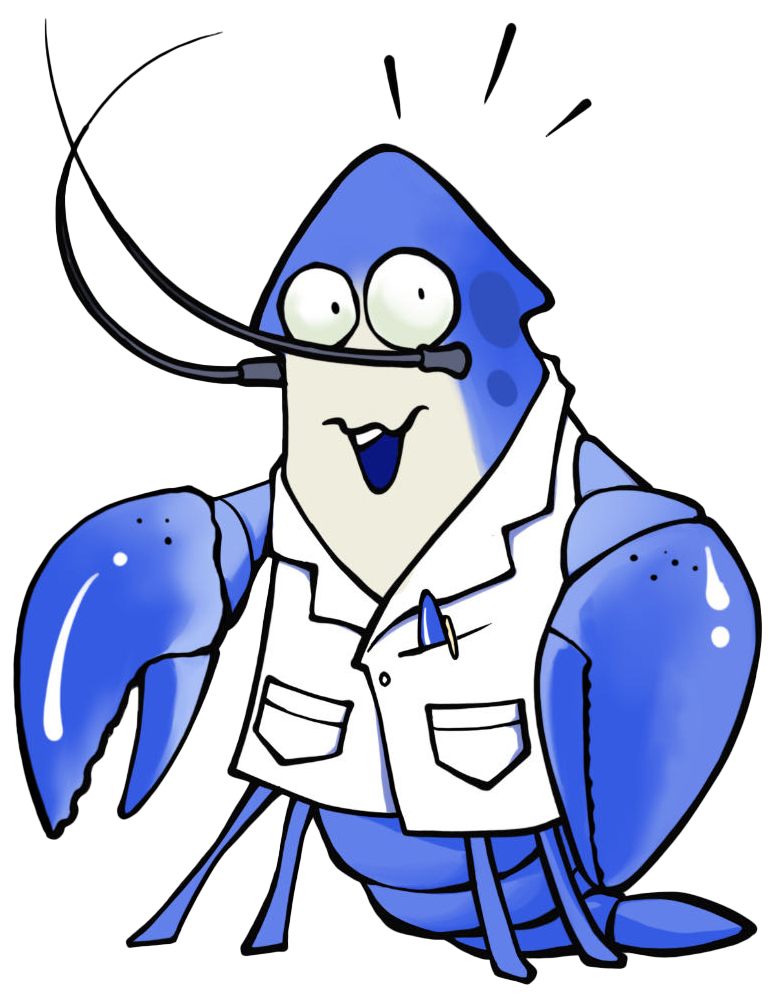
Discover a diverse array of marine life that thrives within the Northumberland Straits. Our mini profiles provide details for each species’ unique characteristics, habitats, and roles in the ecosystem. Whether they’re a part of our research focus or residents at the Homarus Centre, these aquatic wonders have a story worth exploring.
Step into the extraordinary world of lobsters at the Homarus Centre, where you’ll encounter some of nature’s most unique crustaceans. From lobsters flaunting three claws to those adorned in mesmerizing calico patterns, and even the rare blue, calico, and orange varieties, our collection is a showcase of nature’s incredible creativity. Each of these special residents, with their remarkable colours and unusual features, tells a fascinating story of genetic diversity and the wonders of marine life.
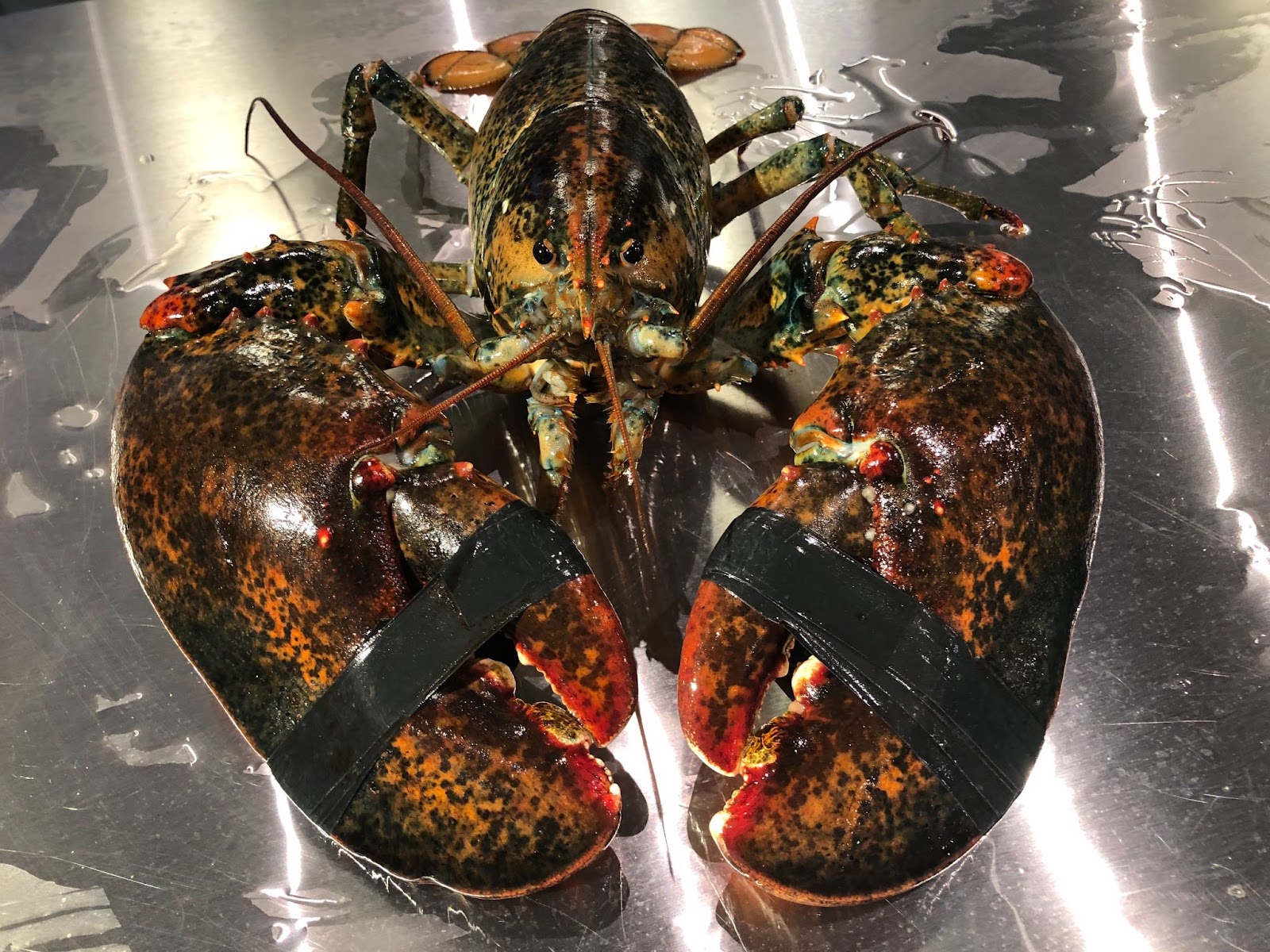
American Lobster
Alfred is an ambidextrous lobster with 2 big crusher claws. It lives in the Homarus aquarium.
Carapace Length
122mm
Sex
Male
Special Feature
2 Crusher Claws
Location
of origin
Cap-Pelé, NB
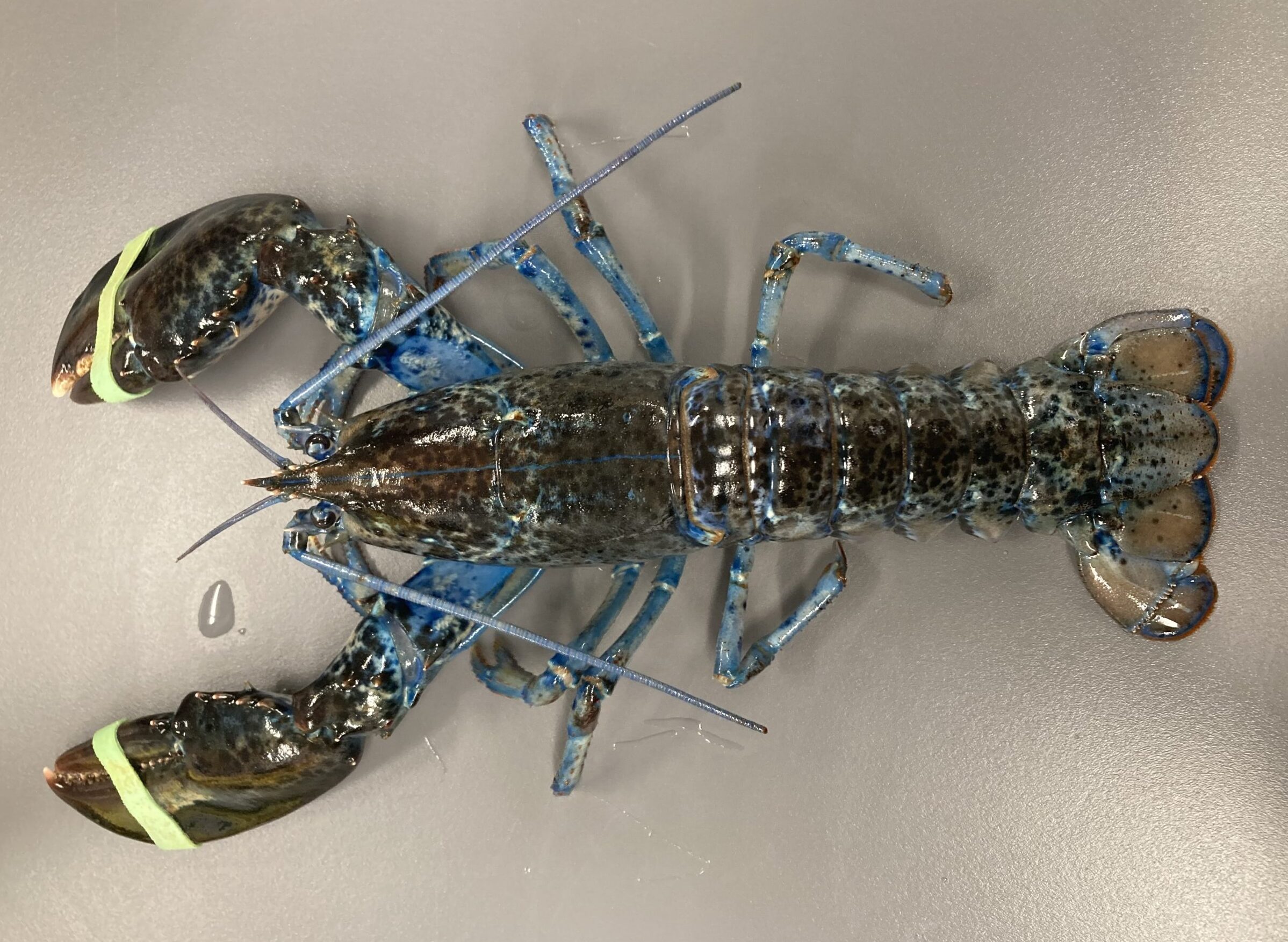
American Lobster
Blue Tooth is a dark blue lobster.
Carapace Length
87mm
Sex
Male
Special Feature
Dark Blue
Location
of origin
Shediac Lobster Shop
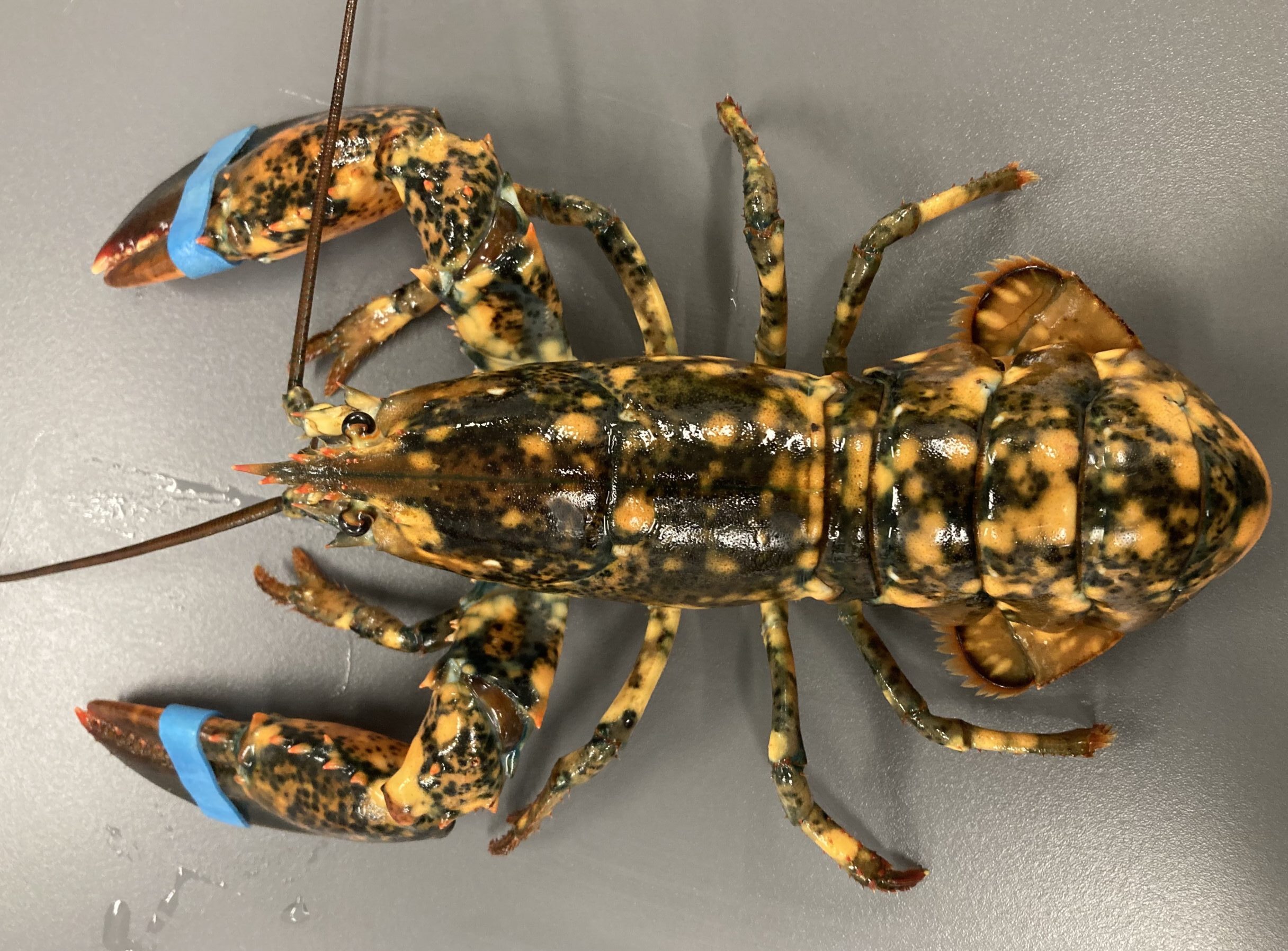
American Lobster
Brianna is a calico lobster.
Carapace Length
74mm
Sex
Female
Special Feature
Calico
Location
of origin
Murray Corner, NB
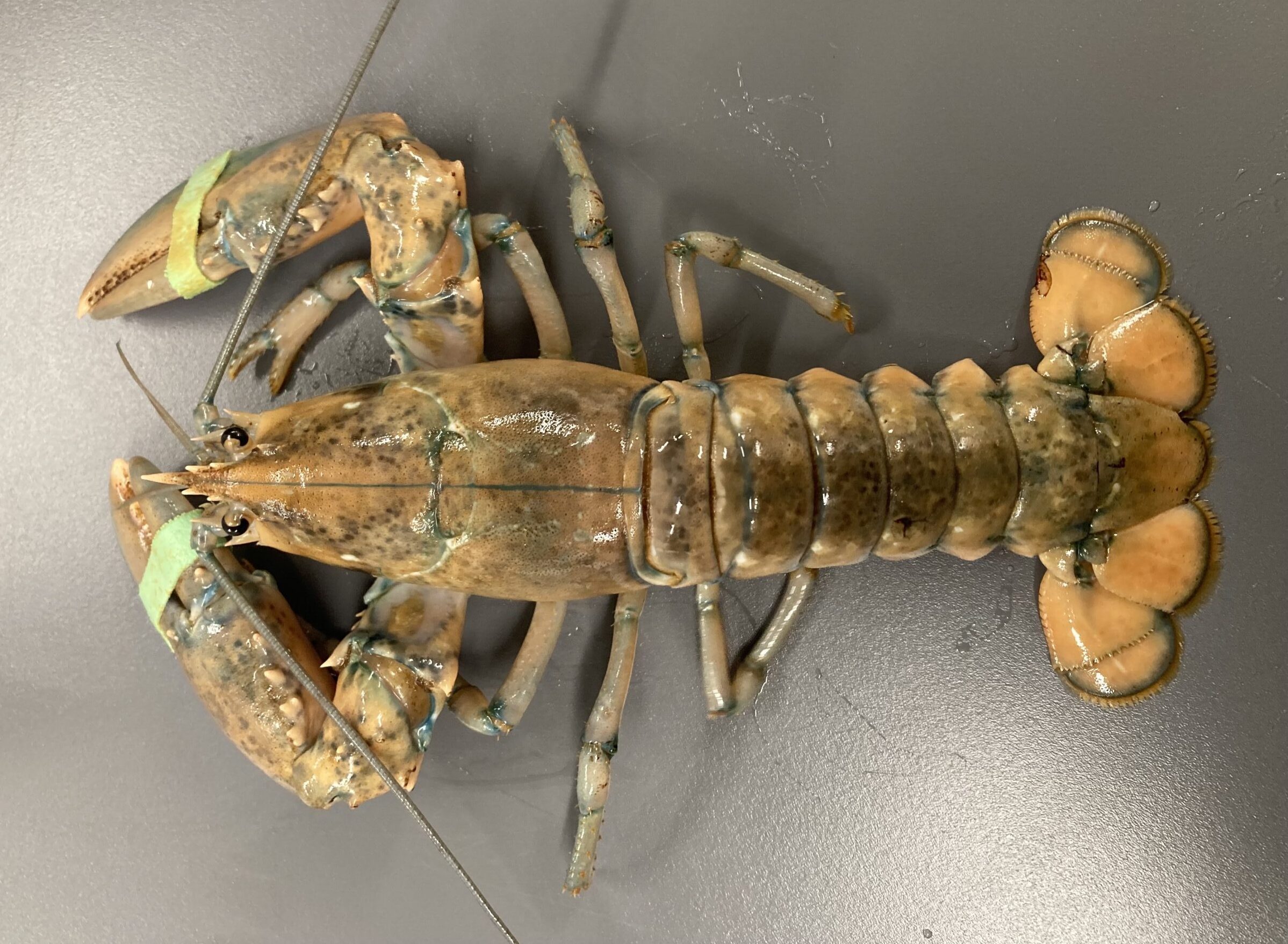
American Lobster
Butter is a pale peachy coloured lobster.
Carapace Length
81mm
Sex
Female
Special Feature
Peach
Location
of origin
Cap-Pelé, NB
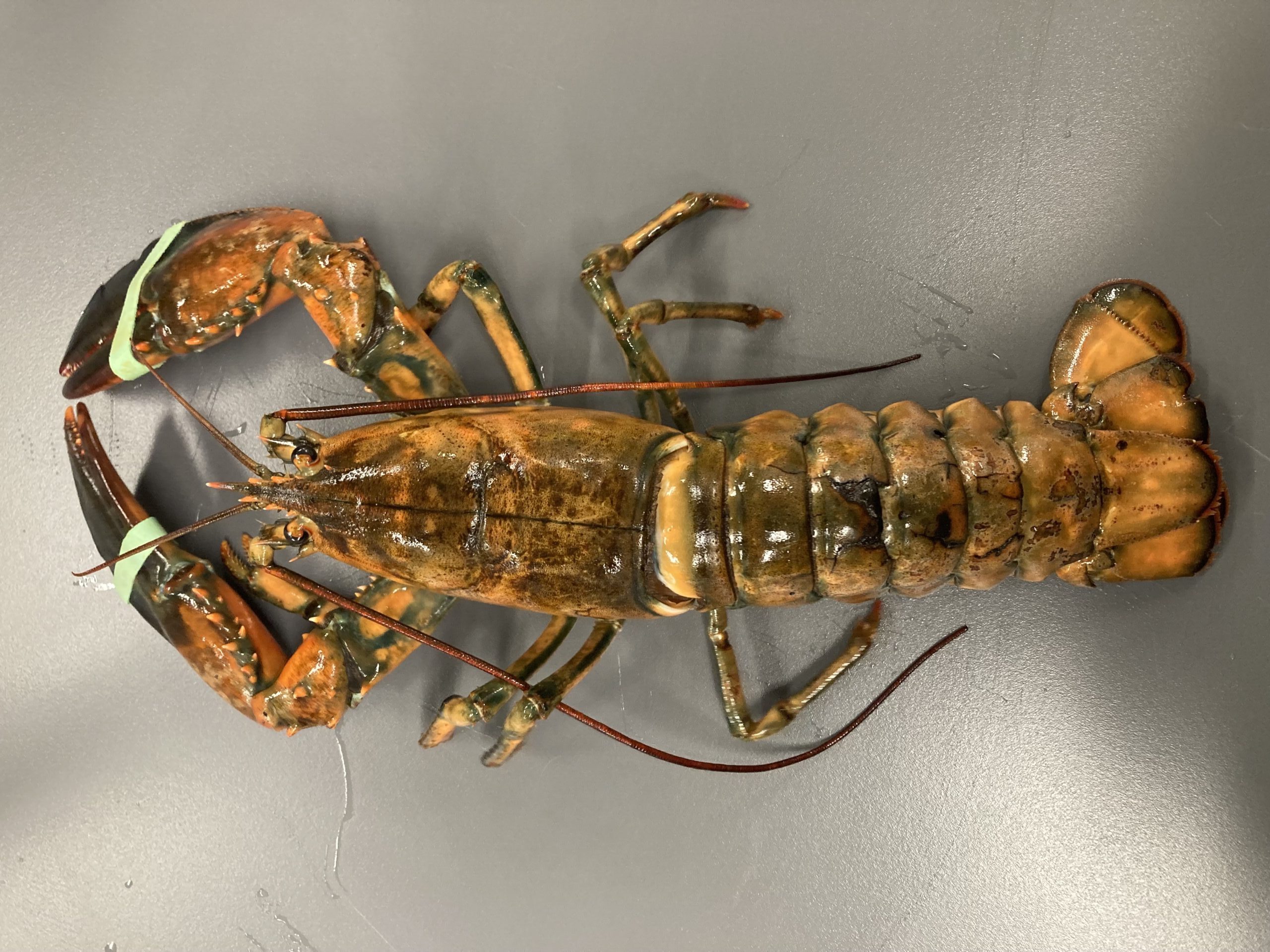
American Lobster
Cheddar is dark orange with black claws.
Carapace Length
91mm
Sex
Female
Special Feature
Dark Orange
Location
of origin
Unknown
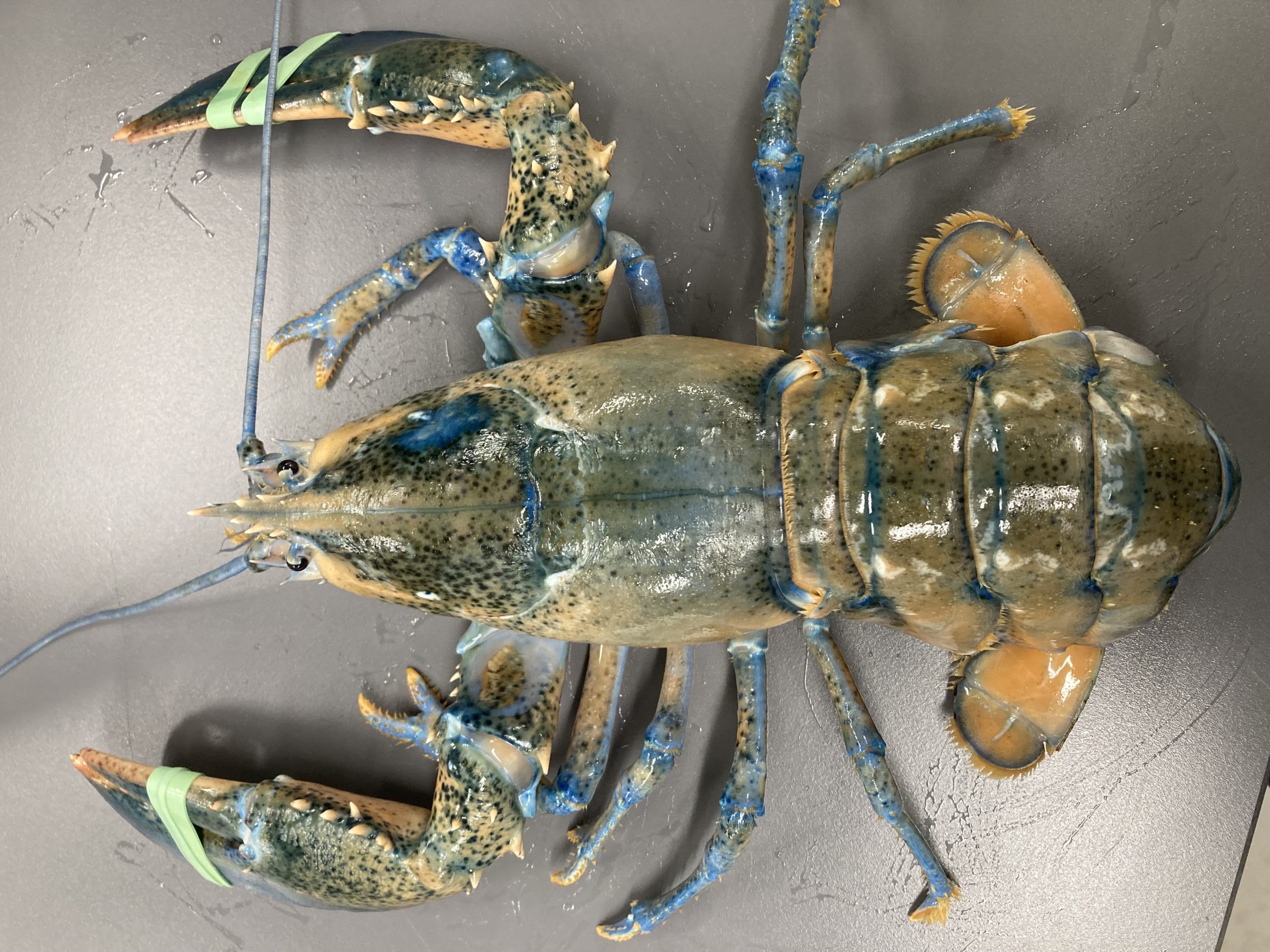
American Lobster
Cinderella is the biggest lobster at the Homarus Centre.
Carapace Length
133mm
Sex
Female
Special Feature
Peachy Blue
Location
of origin
Shediac Lobster Shop
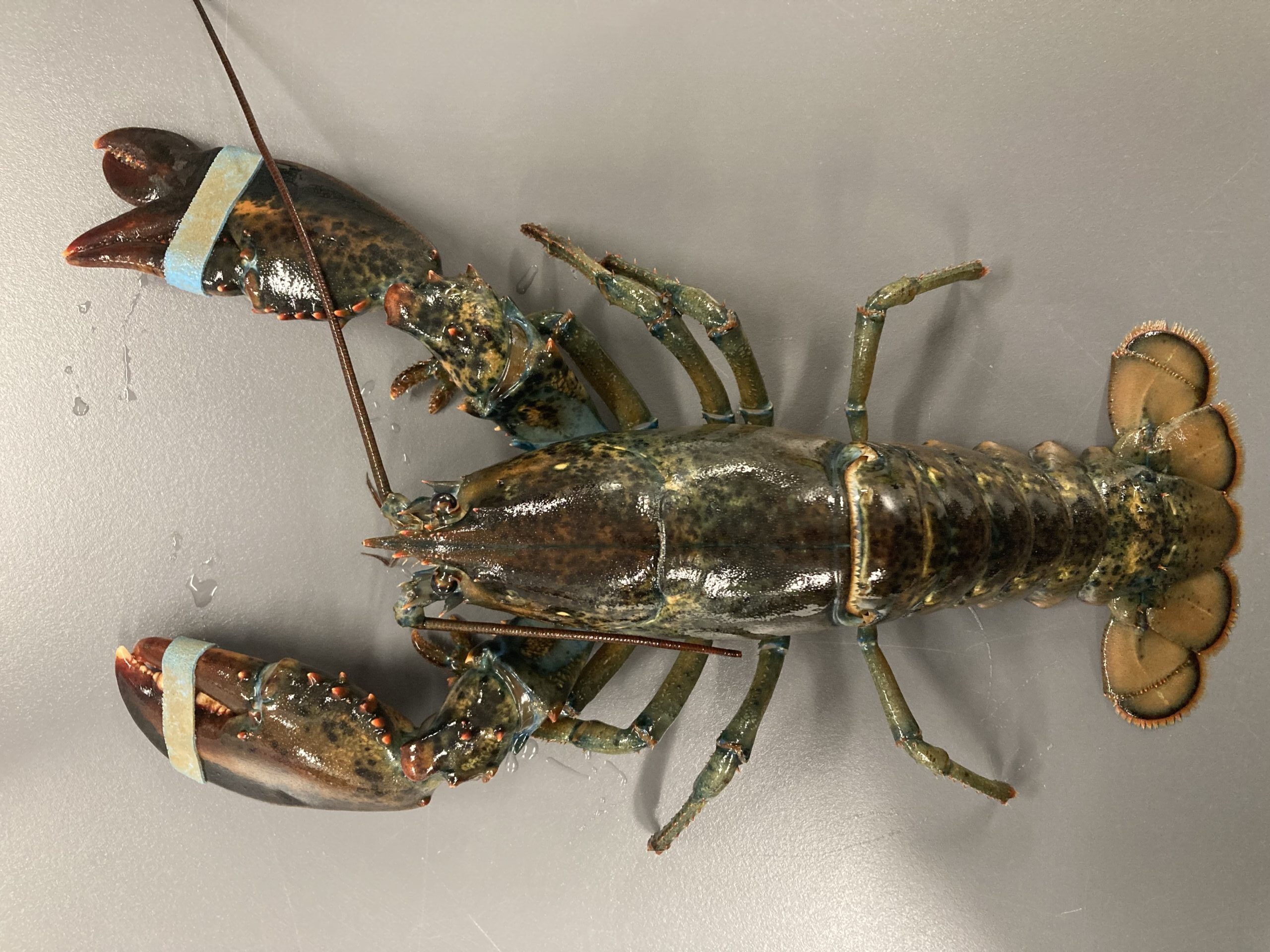
American Lobster
ET has 3 claws!
Carapace Length
88mm
Sex
Male
Special Feature
3 Claws
Location
of origin
Unknown
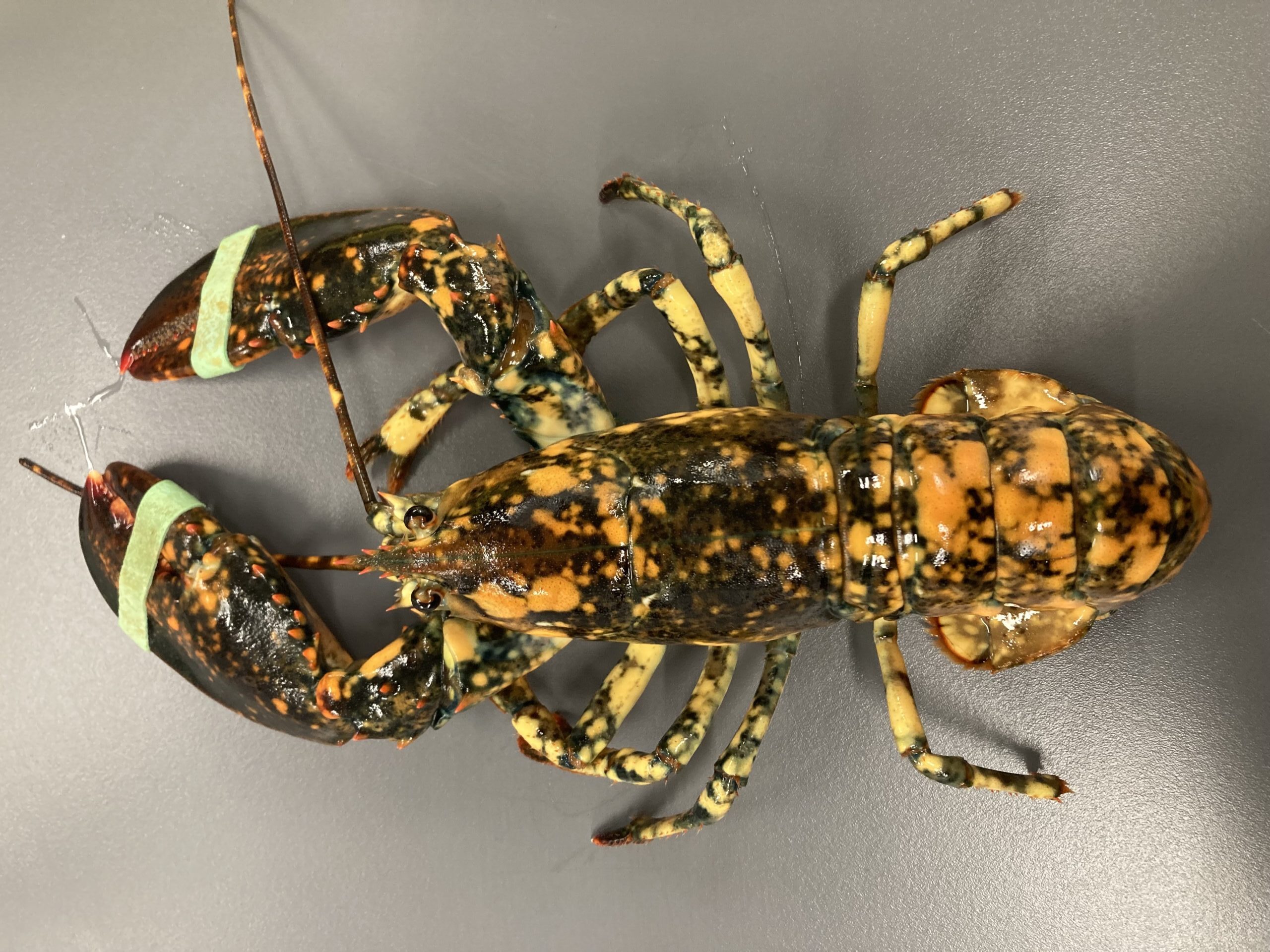
American Lobster
Flake is a calico lobster with spots on his antennae.
Carapace Length
83mm
Sex
Male
Special Feature
Calico
Location
of origin
Cap-Pelé, NB

American Lobster
Leonard is a little blue lobster. She is often hiding under rocks in the touch tank.
Carapace Length
45mm
Sex
Female
Special Feature
Blue
Location
of origin
Cap-Pelé, NB
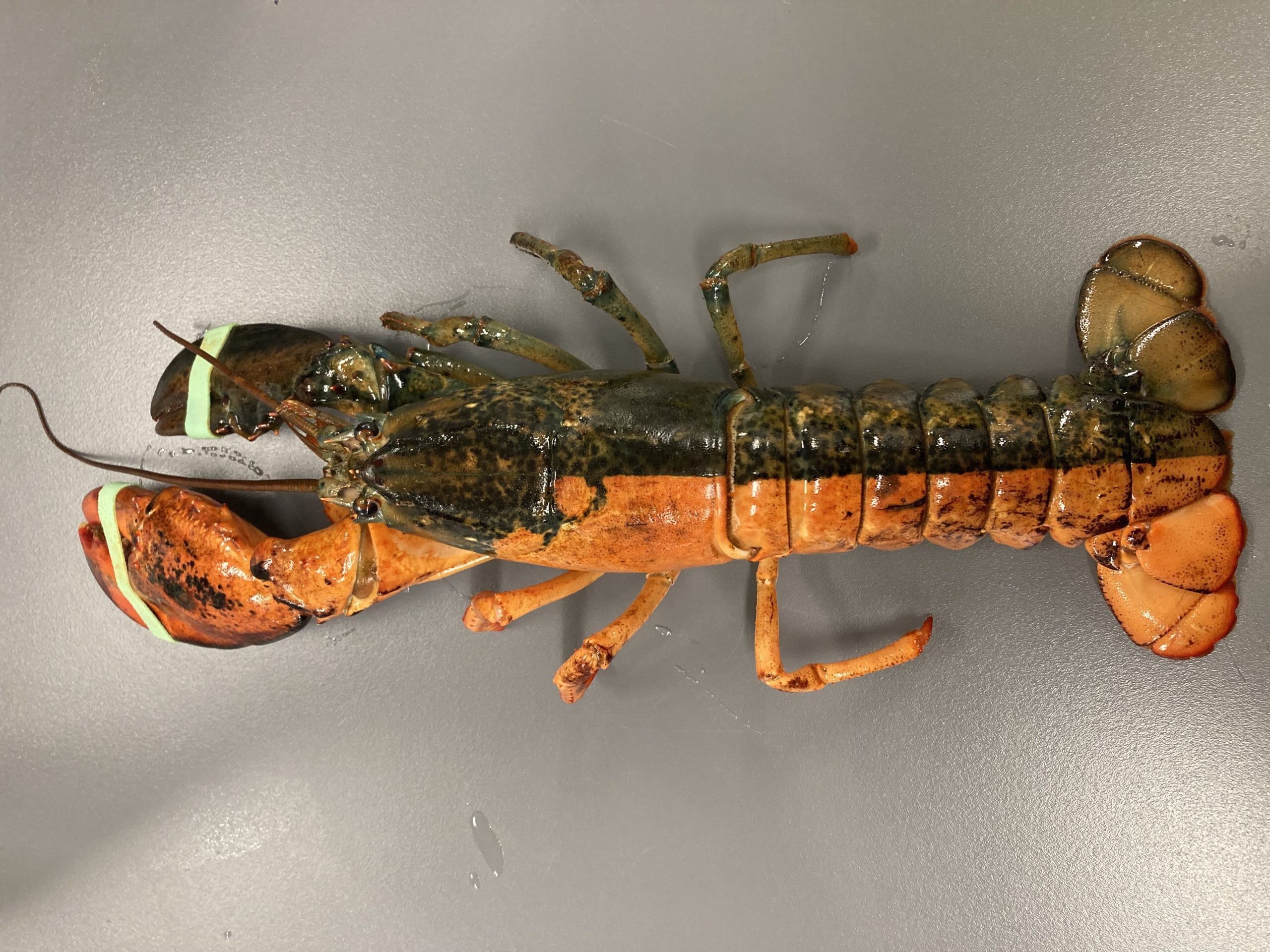
American Lobster
Homarus is lucky to have Lucky! He is our only half-and-half lobster.
Carapace Length
87mm
Sex
Female
Special Feature
Half-and-Half
Location
of origin
Petit-Cap, NB
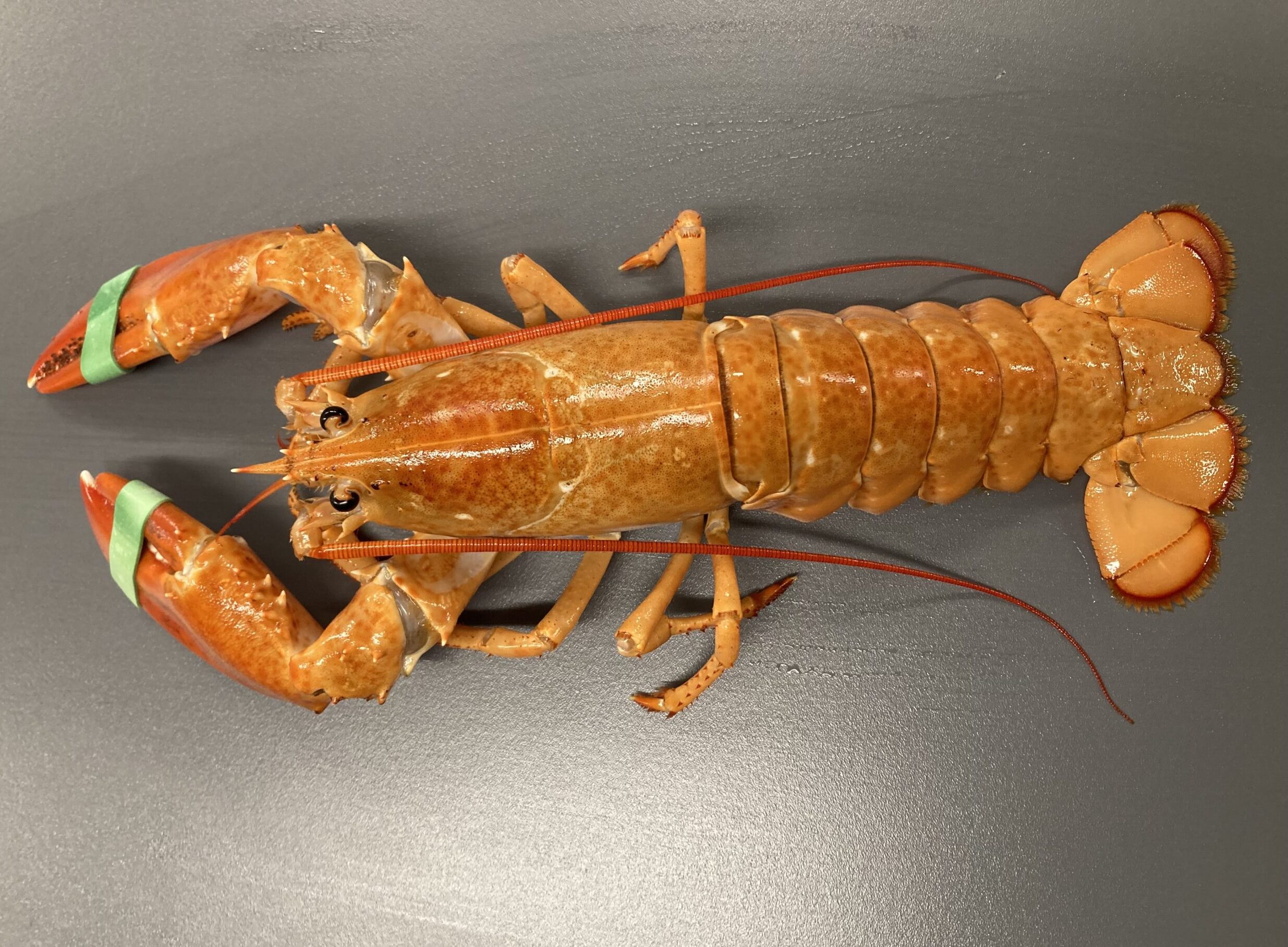
American Lobster
Martine is a bright orange lobster.
Carapace Length
77mm
Sex
Female
Special Feature
Orange
Location
of origin
Cap-Pele, NB
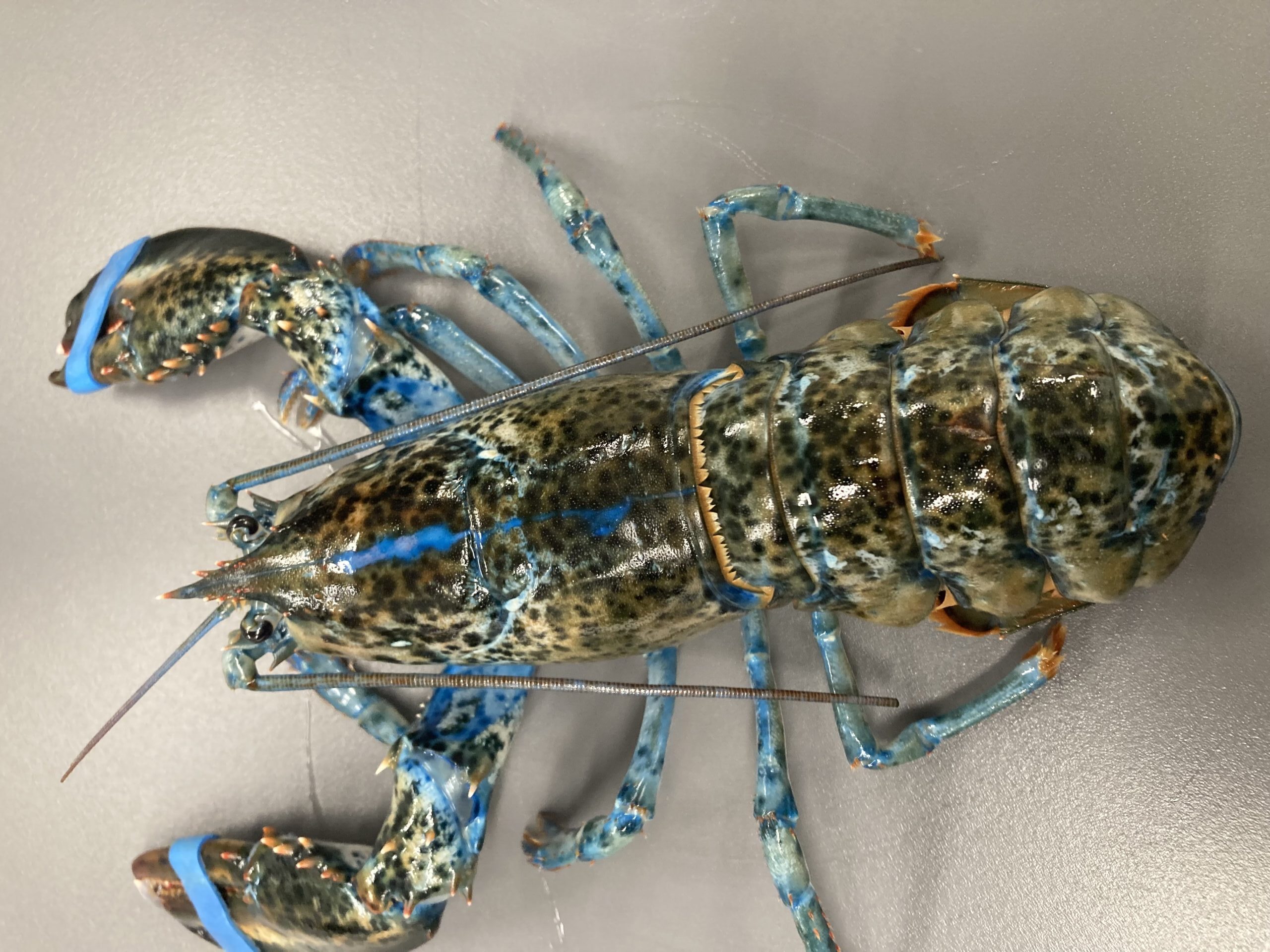
American Lobster
Midnight Lightning has a bright blue stripe along her back.
Carapace Length
83mm
Sex
Female
Special Feature
Blue
Location
of origin
Cap Lumiere, NB
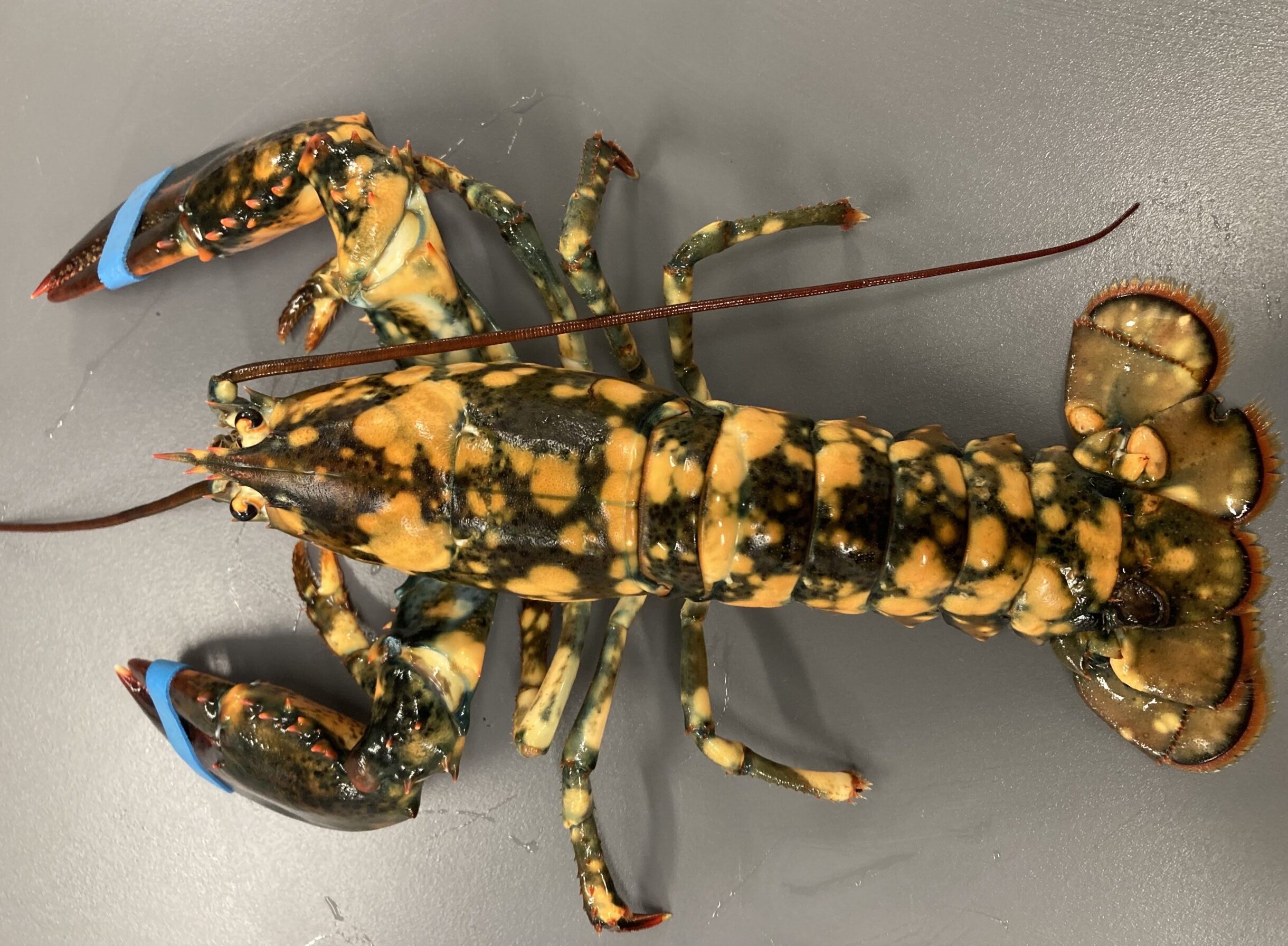
American Lobster
Oliver is a calico lobster with "splotchy" spots.
Carapace Length
80mm
Sex
Male
Special Feature
Calico
Location
of origin
Cormierville, NB
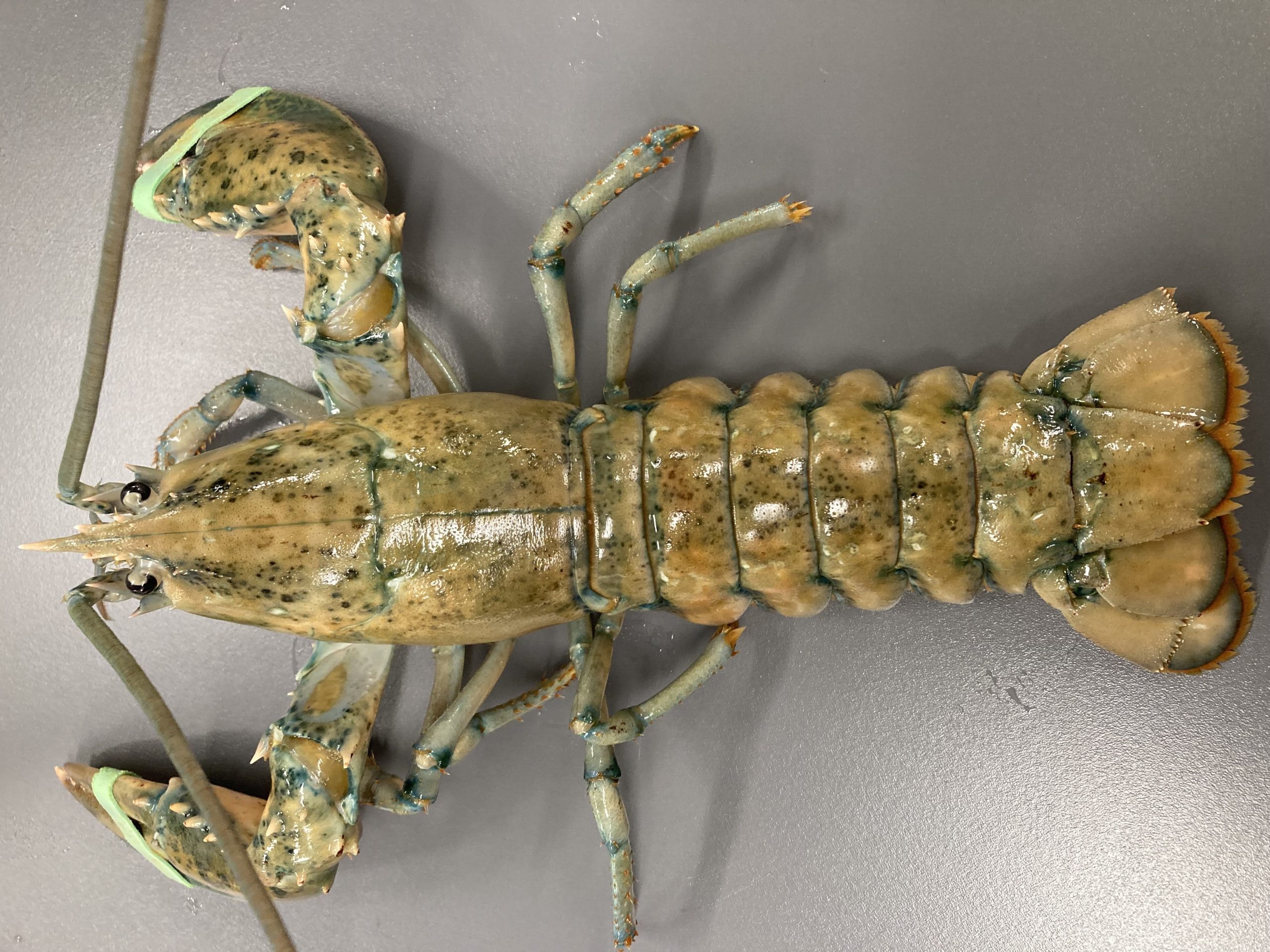
American Lobster
Peaches is a pale peachy coloured lobster. She is as pretty as a peach.
Carapace Length
91mm
Sex
Female
Special Feature
Peach
Location
of origin
Petit-Cap, NB
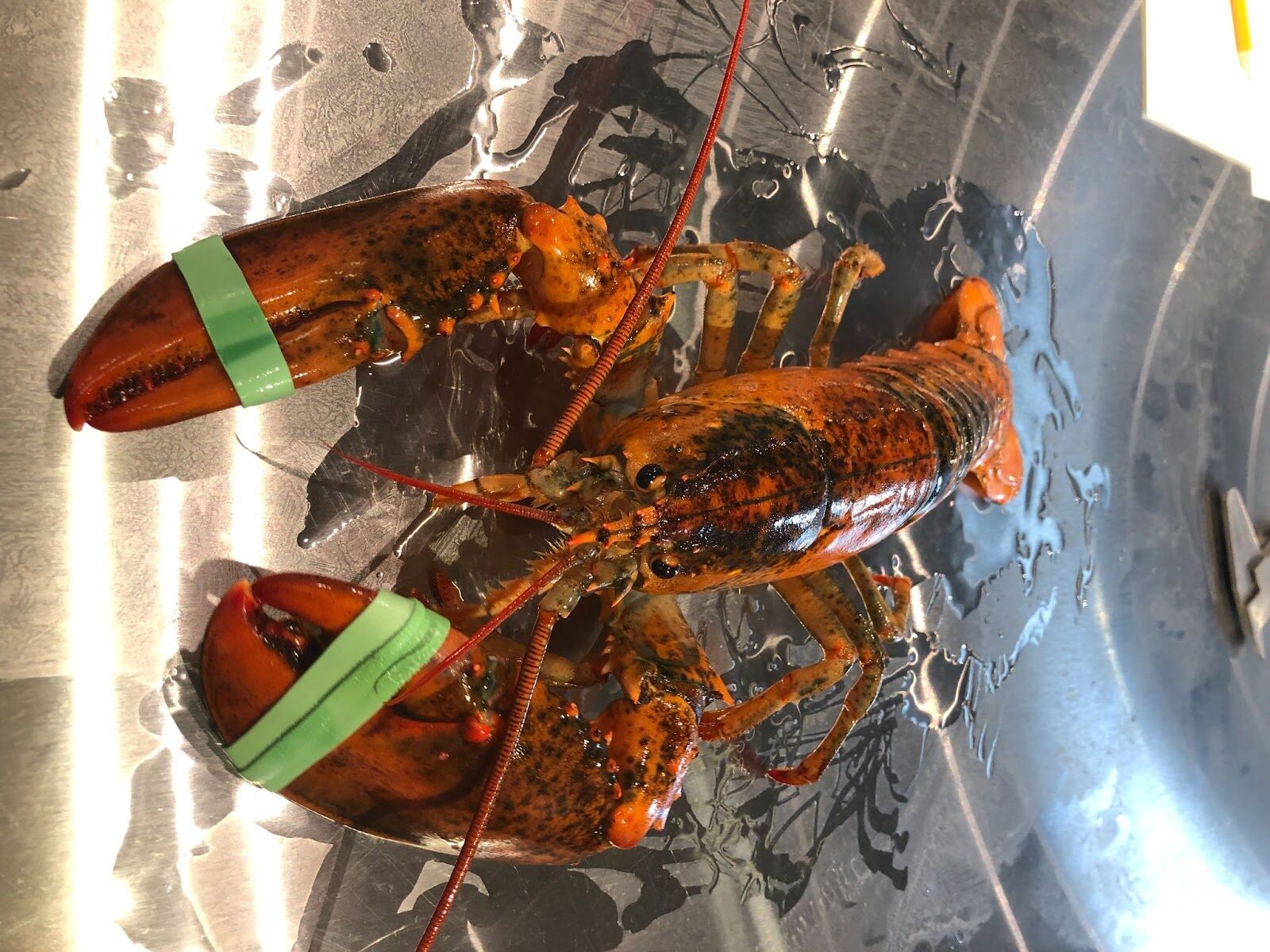
American Lobster
Pumpkin is the bright orange lobster living in the Homarus aquarium.
Carapace Length
98mm
Sex
Male
Special Feature
Orange
Location
of origin
Murray Corner, NB
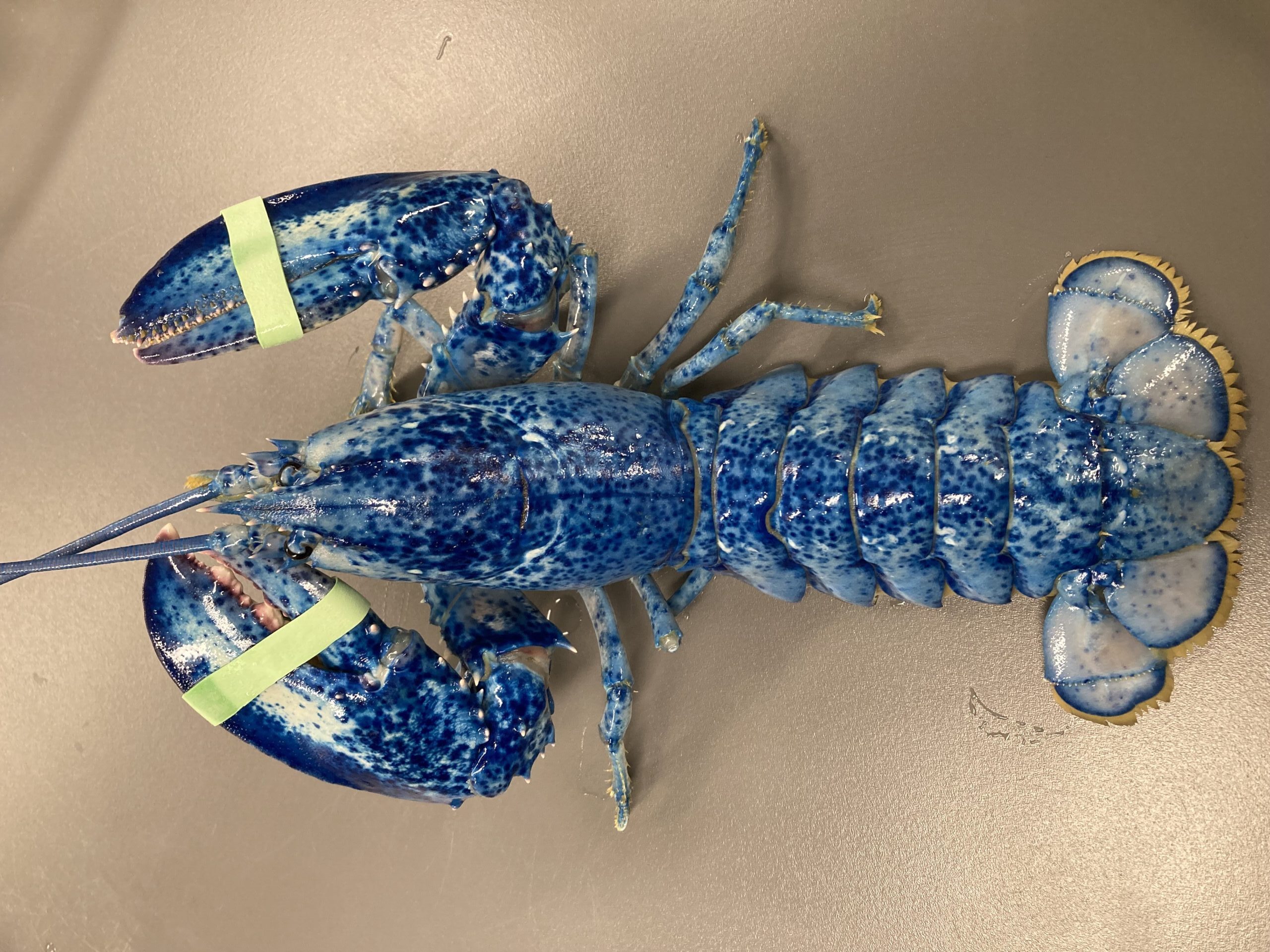
American Lobster
Rowdy B is a feisty blue lobster.
Carapace Length
88mm
Sex
Female
Special Feature
Blue
Location
of origin
Cap-Pelé, NB
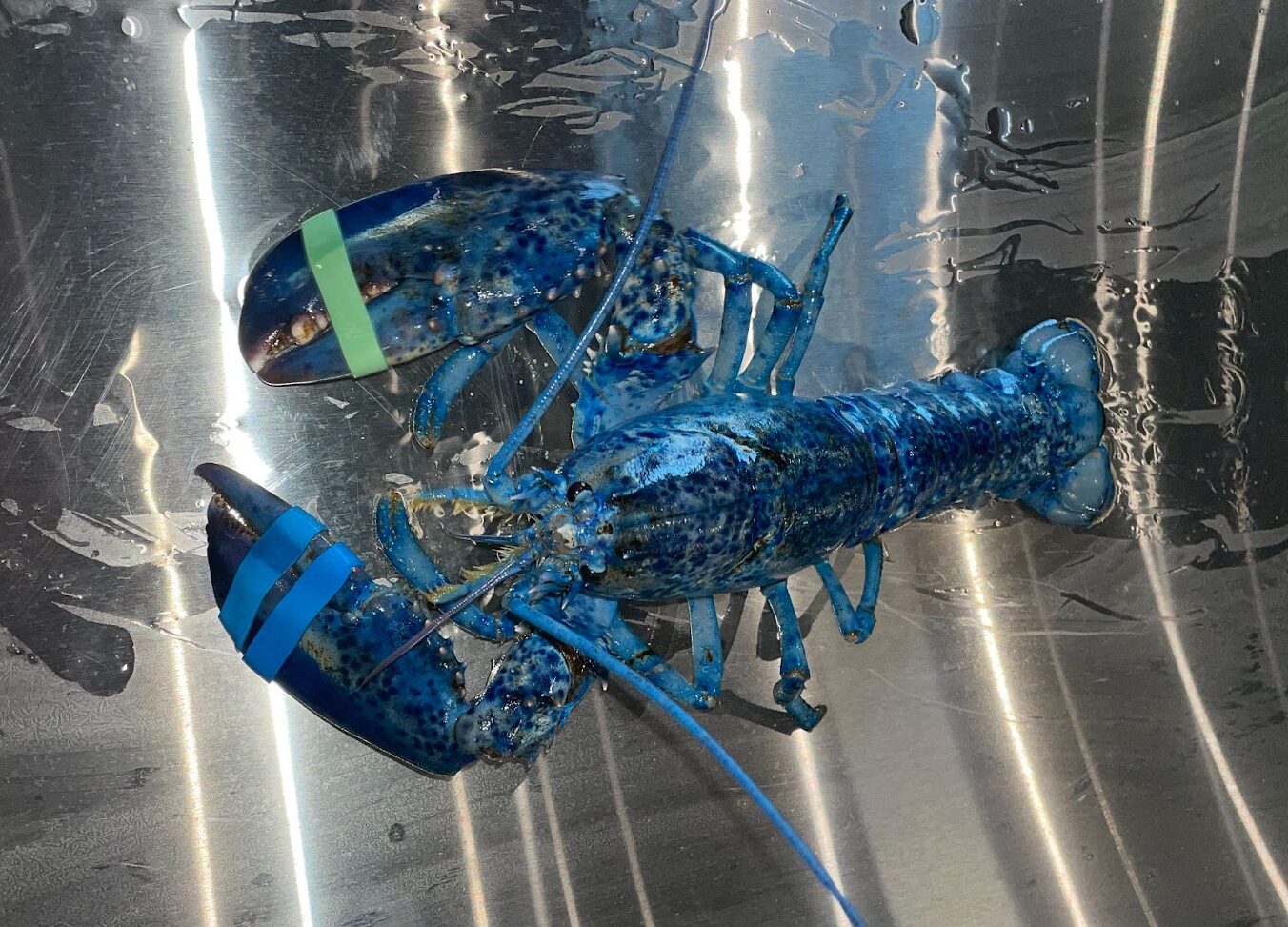
American Lobster
Smurf is the big blue lobster living in the Homarus aquarium.
Carapace Length
87mm
Sex
Male
Special Feature
Blue
Location
of origin
Petit-Cap, NB
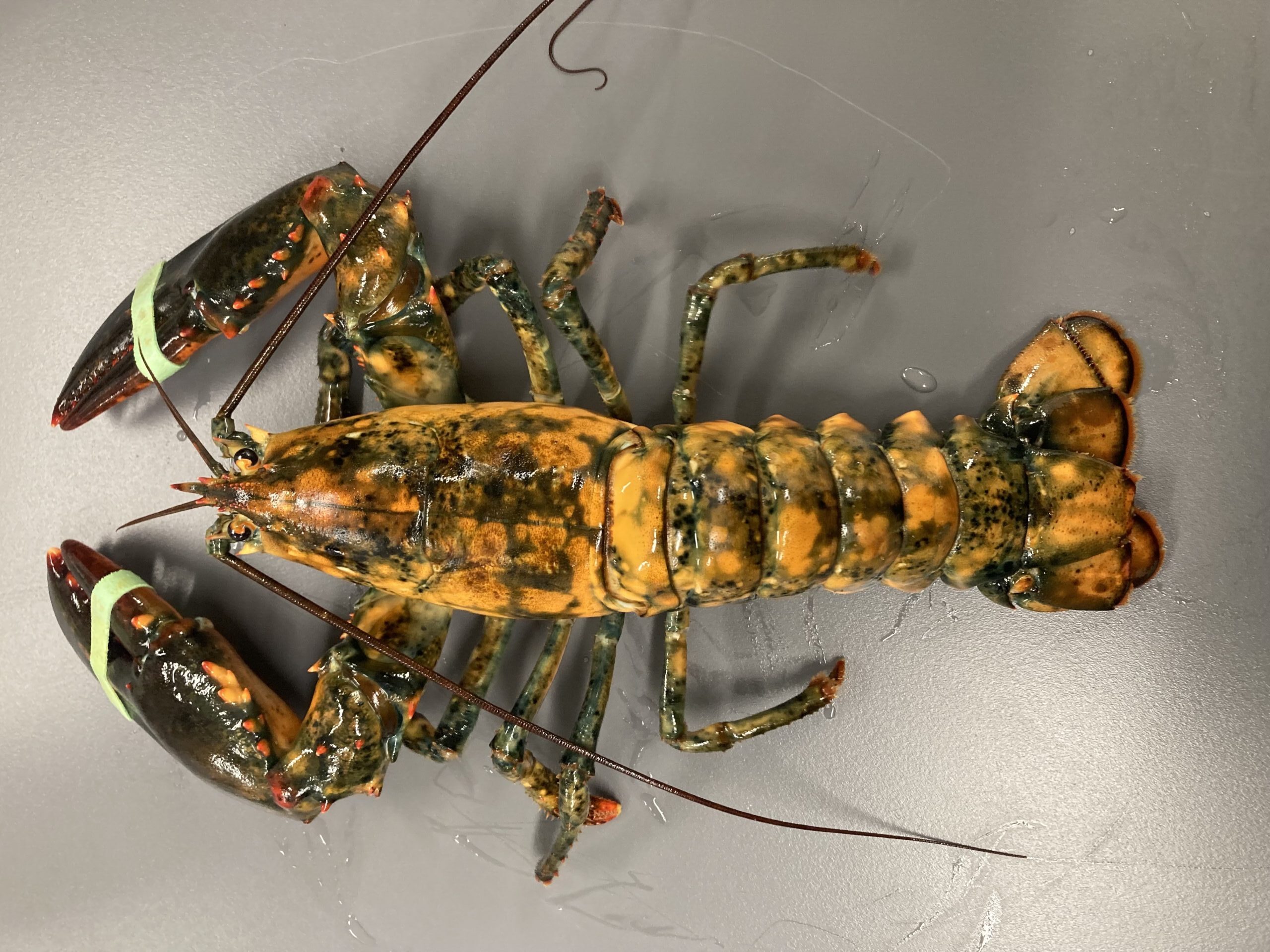
American Lobster
Spot is our biggest calico lobster.
Carapace Length
97mm
Sex
Male
Special Feature
Calico
Location
of origin
Murray Corner, NB
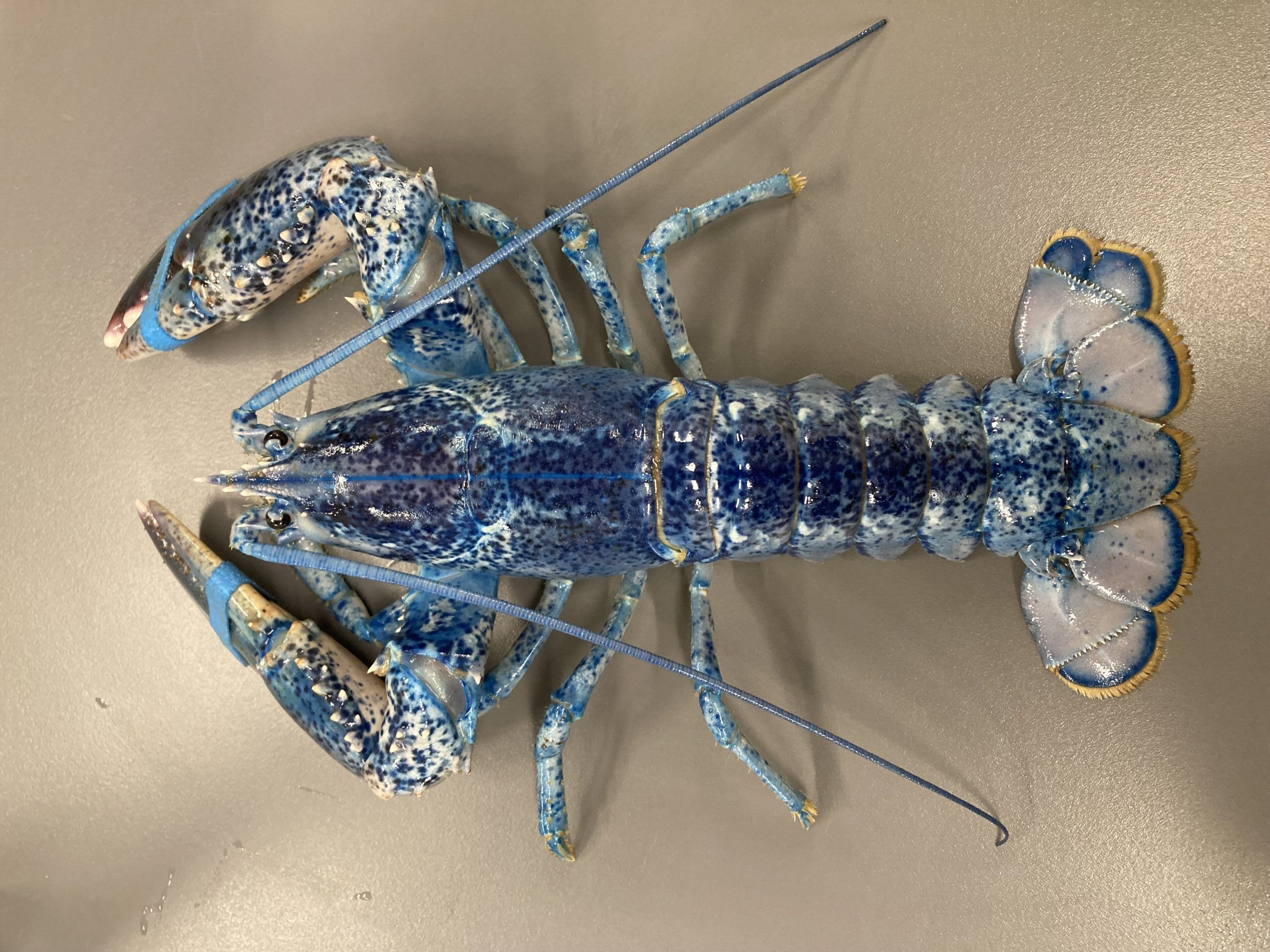
American Lobster
Surf is a vibrant blue lobster.
Carapace Length
87mm
Sex
Male
Special Feature
Blue
Location
of origin
Petit-Cap, NB
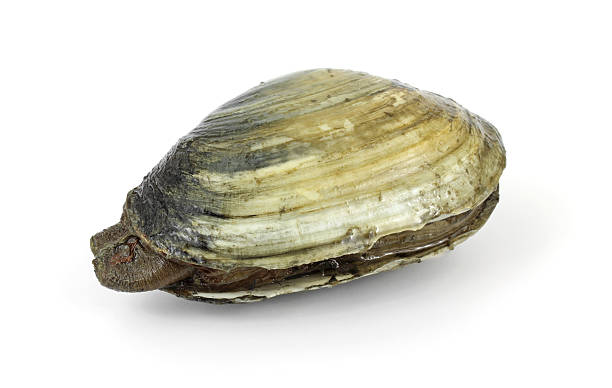
test
Carapace Length
Sex
Female
Special Feature
Location
of origin
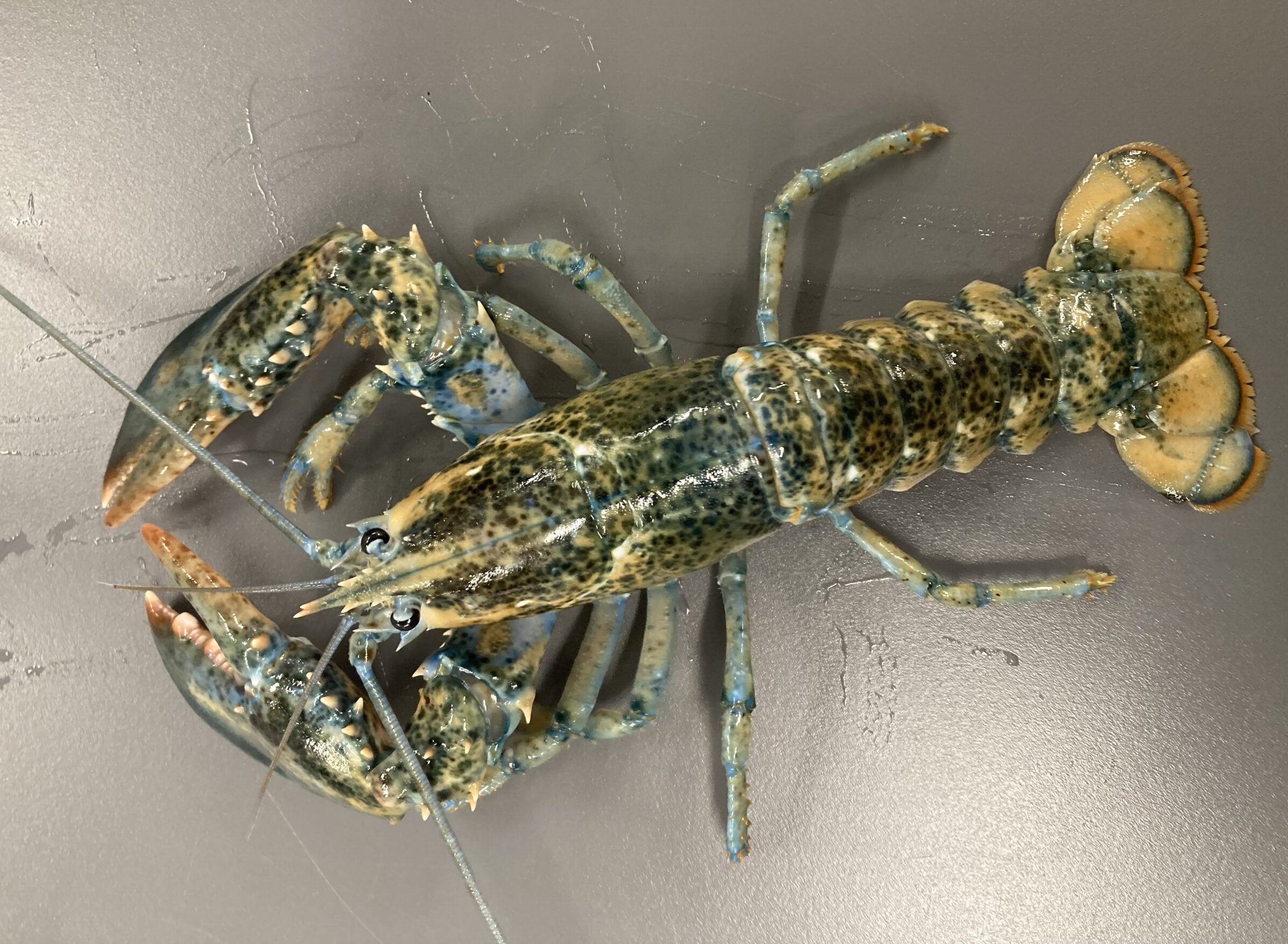
American Lobster
Timmie spent a school year in a classroom helping students learn all about lobsters and their ecosystem.
Carapace Length
79mm
Sex
Male
Special Feature
Peachy Blue
Location
of origin
Shippagan, NB from Aquarium NB
From the iconic lobsters with their formidable claws to the scuttling crabs and shrimpy spectacles, these fascinating creatures are a study in survival and adaptation. With their intricate exoskeletons and remarkable life cycles, crustaceans are not just seafood delicacies but pivotal players in the marine ecosystem, each with a story to tell.
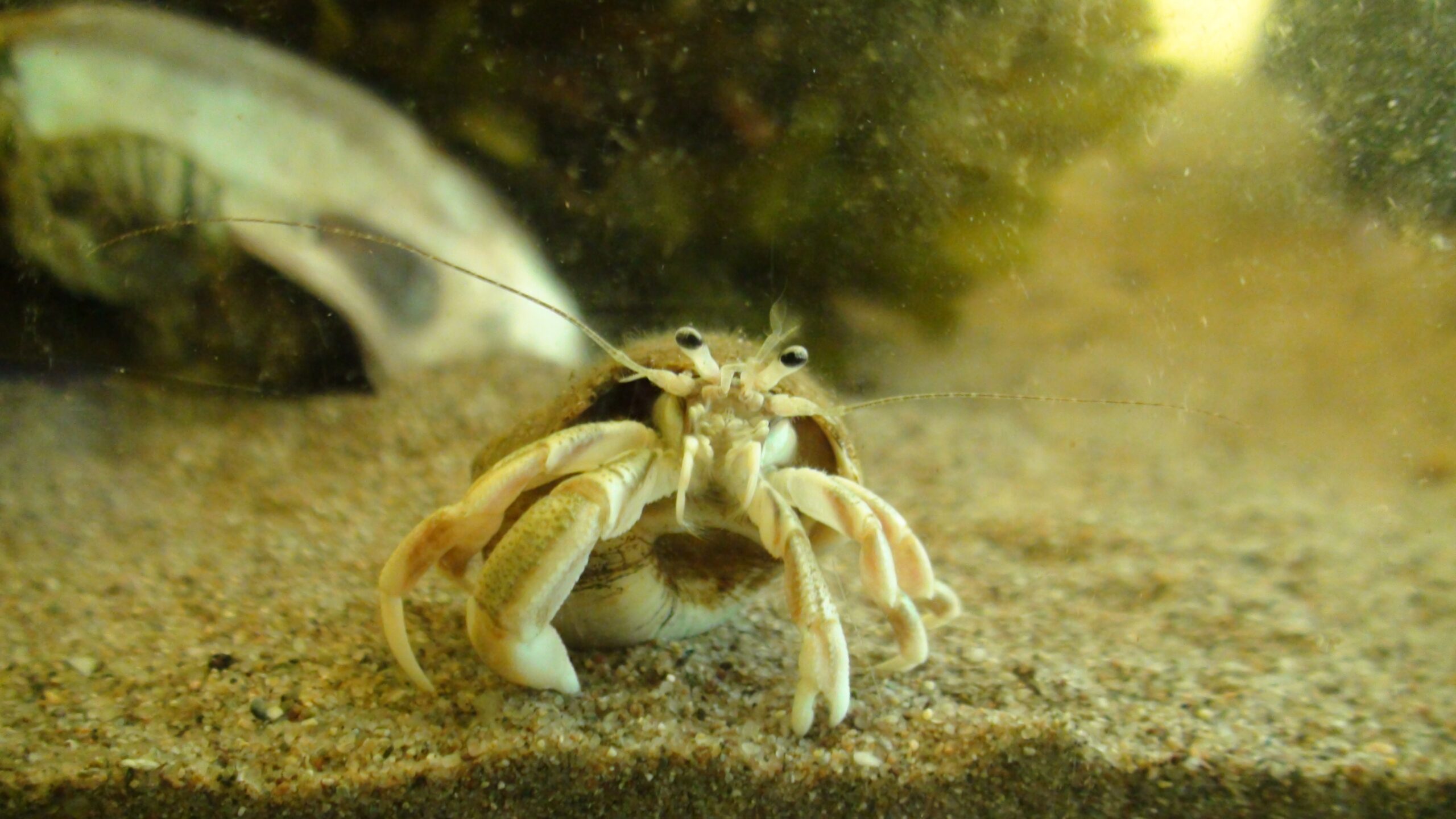
Pagurus acadianus
Habitat
Gravelly, rocky seafloor
Diet
Fish, mollusks, crustaceans
Lifespan
Unknown
Location
of origin
Northumberland Strait
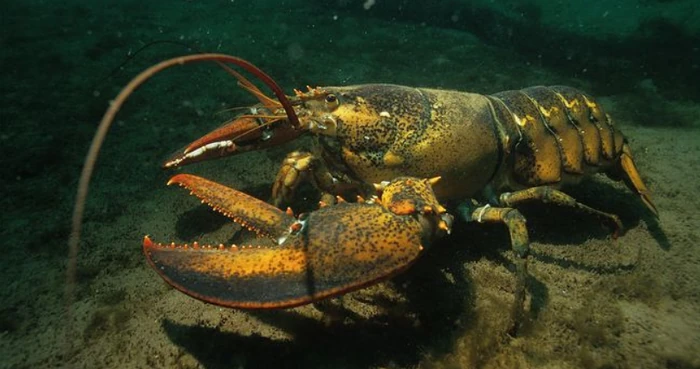
Homarus americanus
Habitat
Rocky areas on the ocean floor (depths 0 to 50 m)
Diet
Fish, crabs, mollusks
Lifespan
60 to 100 years or more
Location
of origin
Northumberland Strait
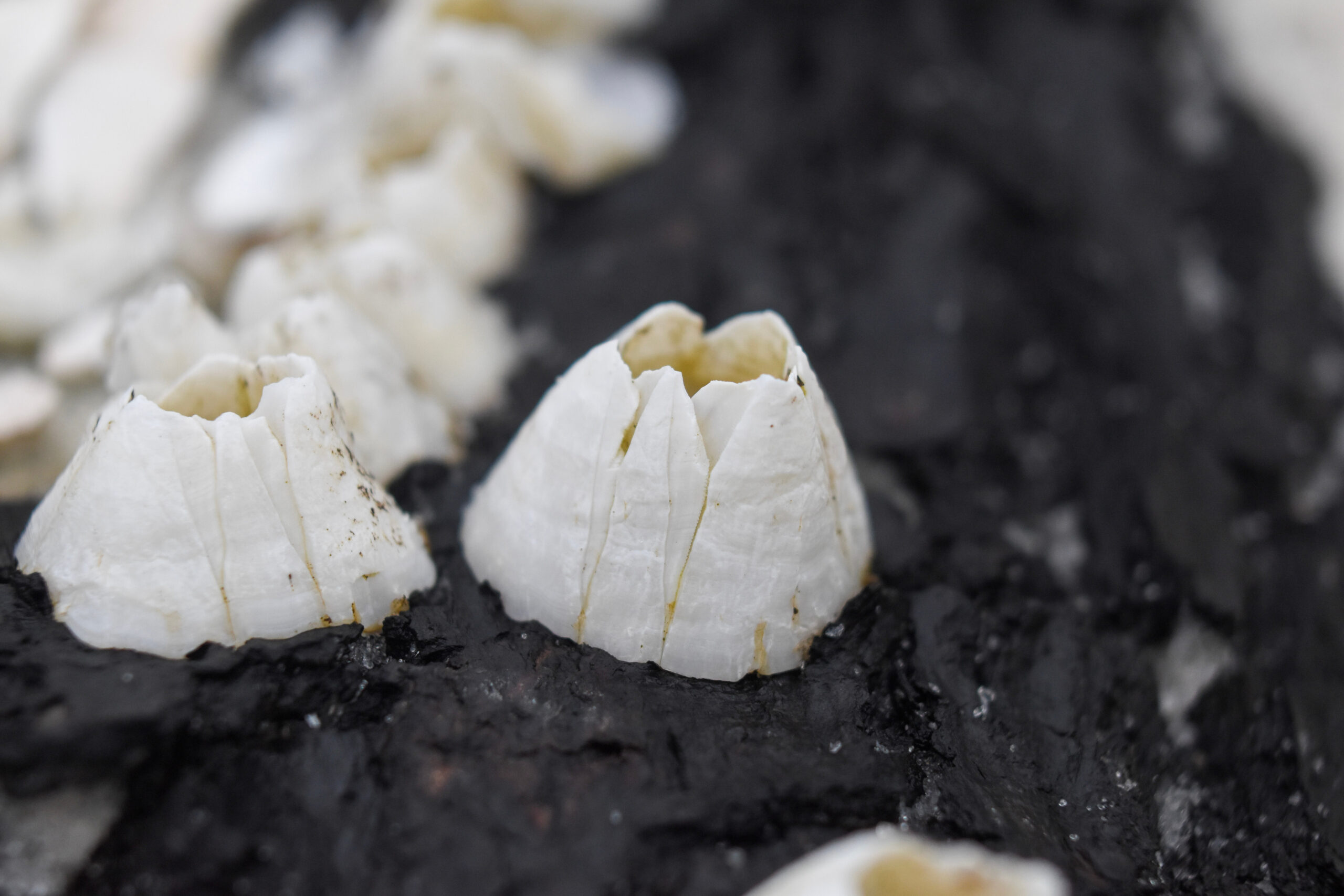
Semibalanus balanoides
Habitat
Rocky shores
Diet
Plankton
Lifespan
8-20 years
Location
of origin
Northumberland Strait
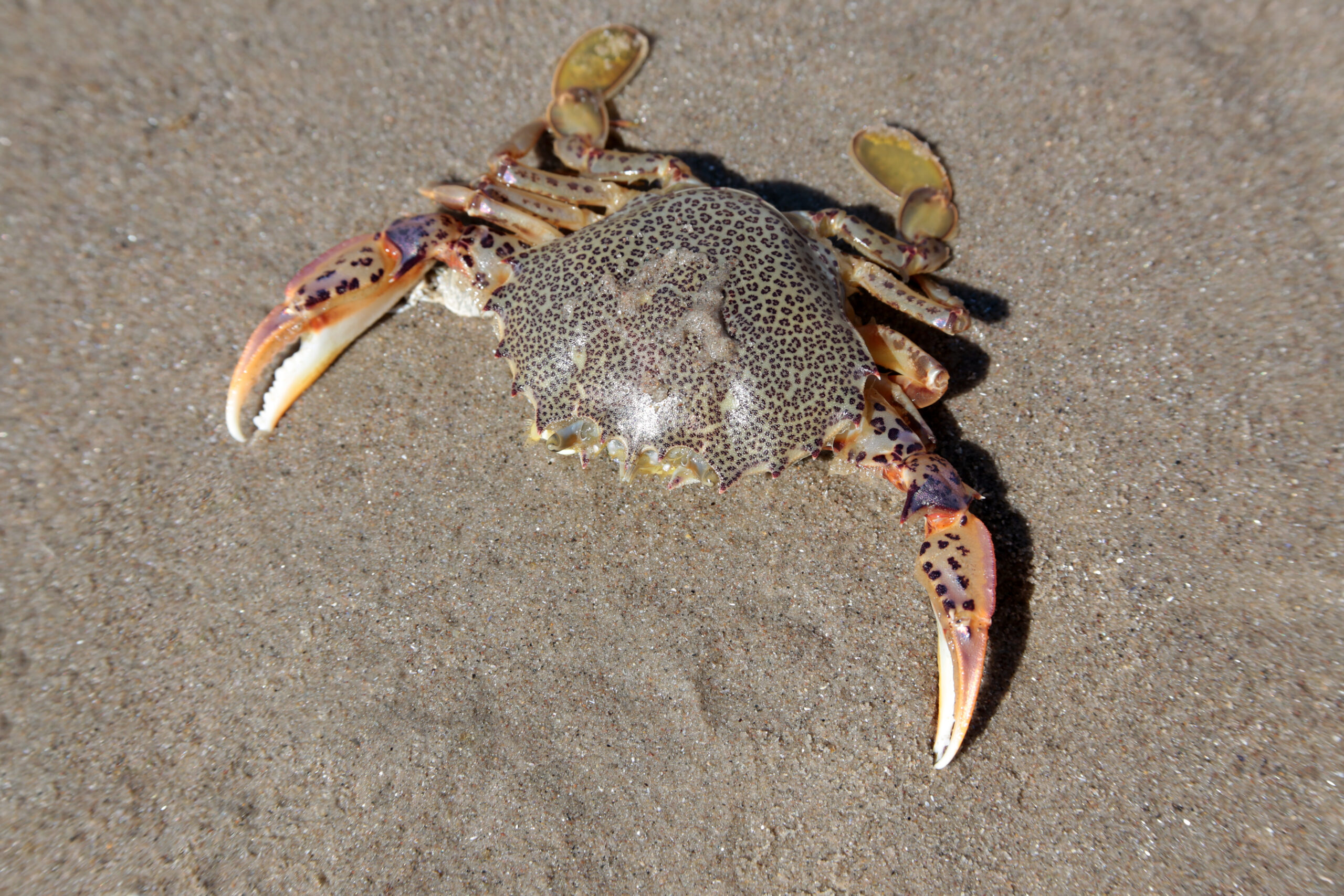
Ovalipes ocellatus
Habitat
Sandy seafloor
Diet
Fish, crabs, mollusks
Lifespan
Unknown
Location
of origin
Petit Cap, NB
Cancer irroratus
Habitat
Sand, gravel, or rocky areas on the ocean floor (depths 0 to 750 m)
Diet
Mollusks, crustaceans, plants, snails, and small fish
Lifespan
8 years
Location
of origin
Northumberland Strait
From the graceful glide of squids to the steady amble of snails, mollusks bring a touch of elegance to the marine world. These soft-bodied marvels, protected by stunning shells or showcasing their vivid colours, are true wonders of adaptation and diversity. Mollusks, ranging from tiny clams to the colossal octopus, play a crucial role in aquatic environments, each with its unique tale of resilience and ecological significance.
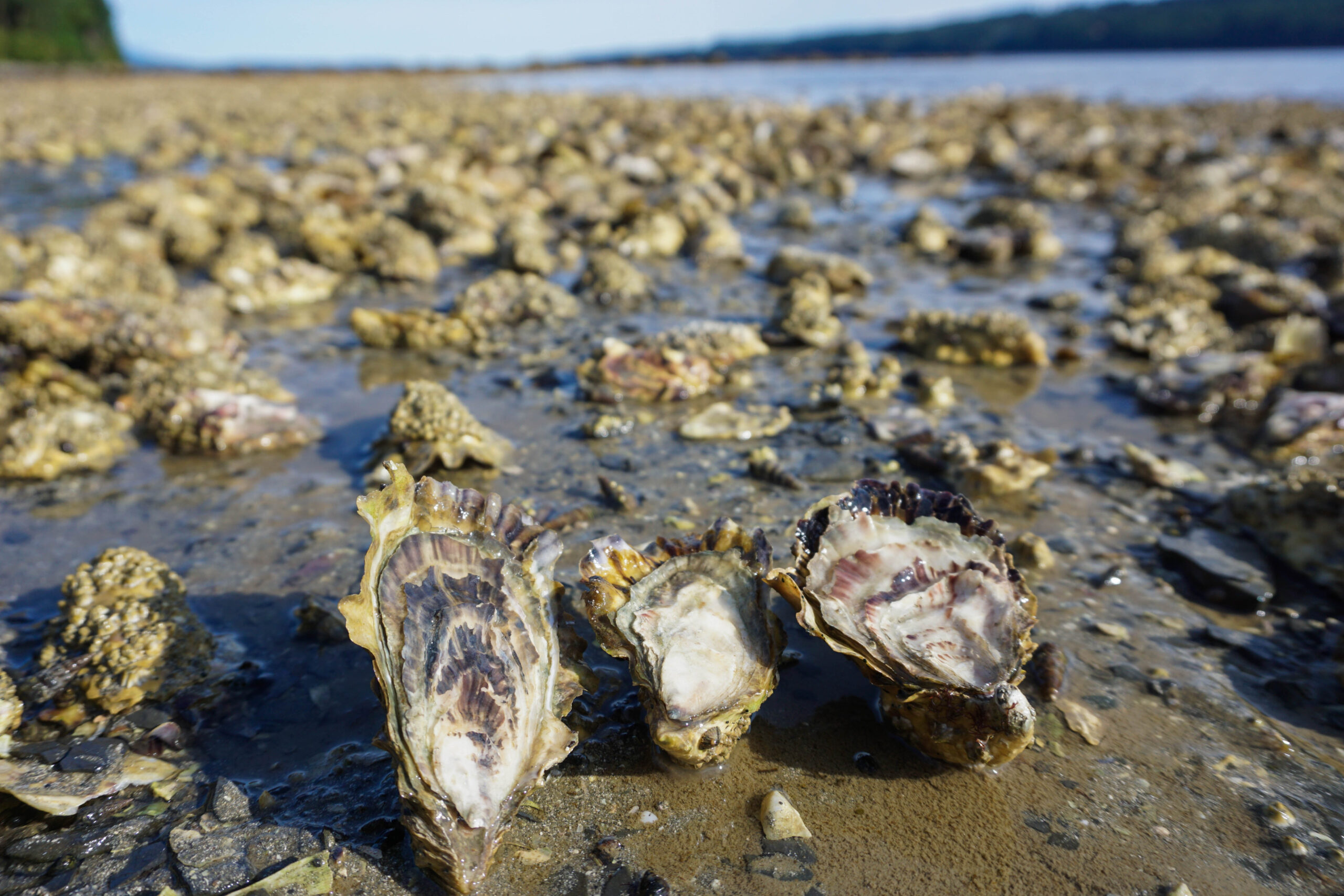
Crassostrea virginica
Habitat
Firm ocean bottoms and stuck to each other in oyster reef structures (depths 3 to 12 m)
Diet
Filter-feeder, plankton, algae
Lifespan
20 years
Location
of origin
Touch tank
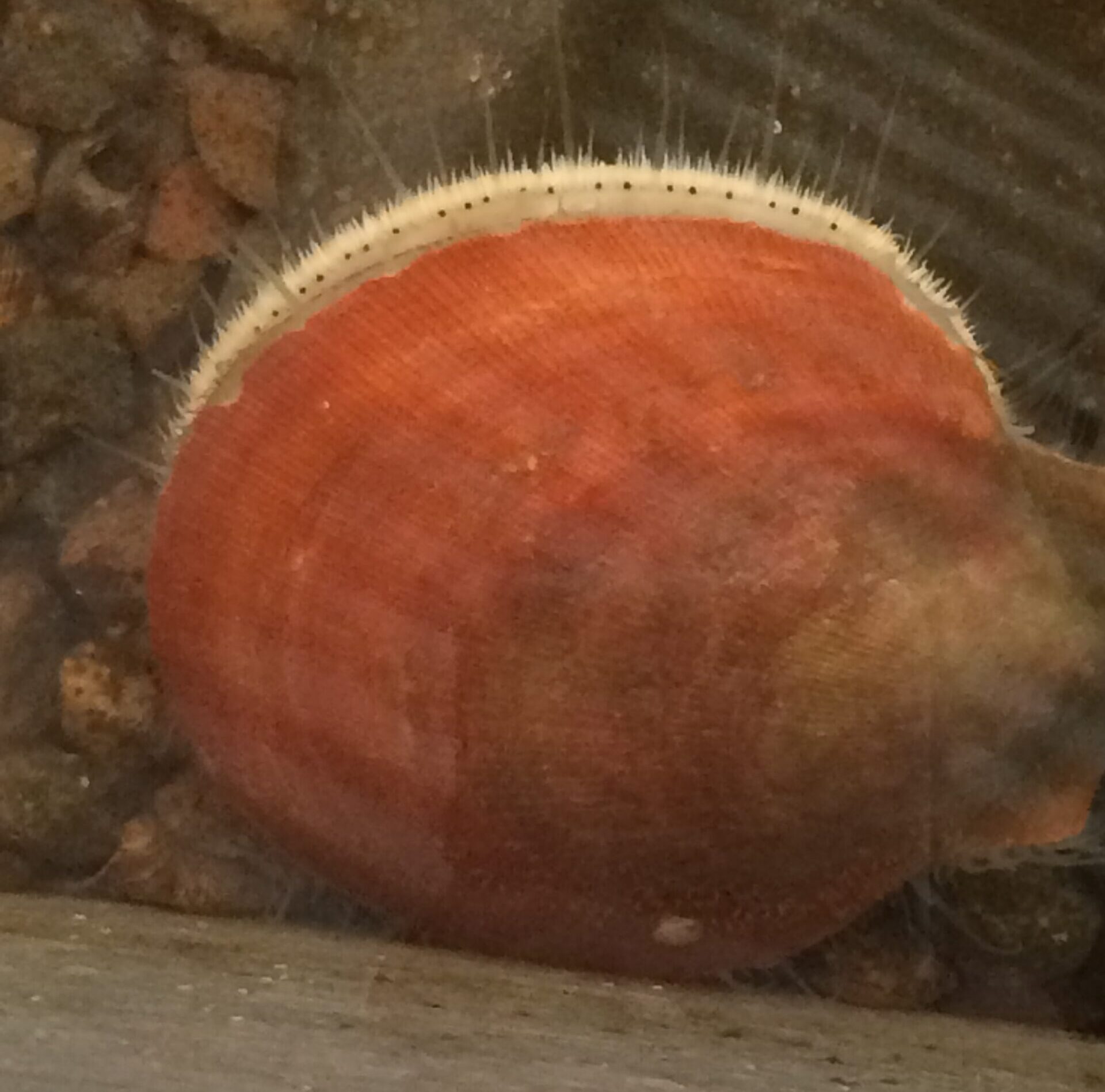
Placopecten magellanicus
Habitat
Sandy or rocky areas on the ocean floor
Diet
Plankton
Lifespan
20 years
Location
of origin
Northumberland Strait
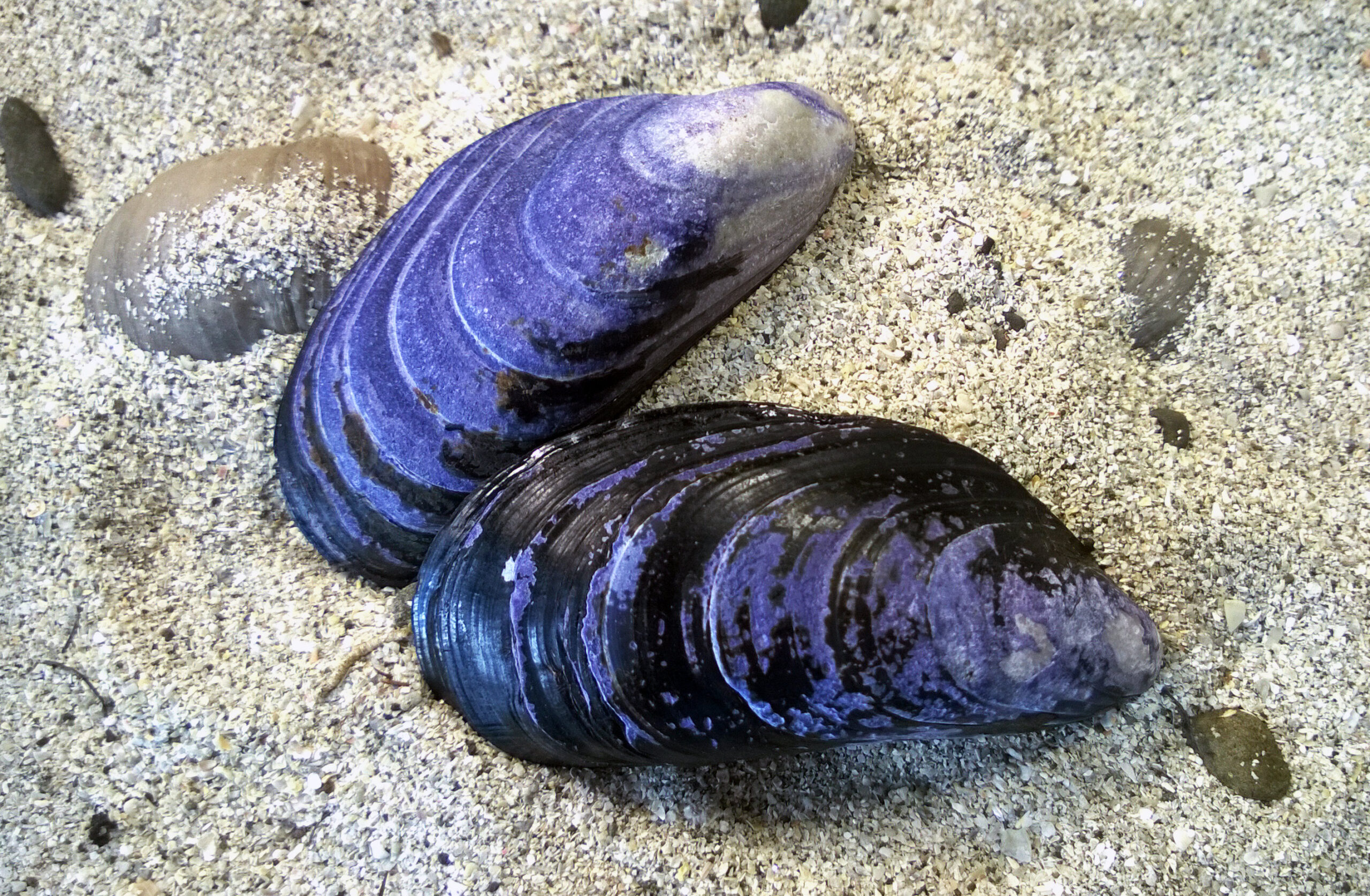
Mytilus edulis
Habitat
Firm structures on seafloor
Diet
Plankton, algae
Lifespan
12 years
Location
of origin
Northumberland Strait

Lunatia heros
Habitat
Gravelly, muddy, or sandy seafloor (depths 30-75 m)
Diet
Bivalves and other mollusks
Lifespan
2-7 years
Location
of origin
Neguac, NB & Cap-Pelé, NB

Littorina littorea
Habitat
Intertidal zone and rocky seafloor (up to 40 m)
Diet
Algae
Lifespan
3-5 years
Location
of origin
New Brunswick Aquarium (Shippagan, NB)

Mya arenaria
Habitat
Muddy or sandy seafloor from intertidal to 70m depths.
Diet
Plankton, algae
Lifespan
7-12 years
Location
of origin
Northumberland Strait
Dive into the world of Echinoderms and Cnidarians, where starfish light up the ocean floor and jellyfish dance through the waters with mesmerizing grace. Echinoderms, with their radial symmetry and regenerative powers, and Cnidarians, known for their stinging tentacles and pulsating movements, are fascinating studies in marine resilience and beauty. These creatures, from the spiny urchins to the delicate anemones, play vital roles in their ecosystems, captivating us with their survival strategies and their vital part in the ocean’s balance.
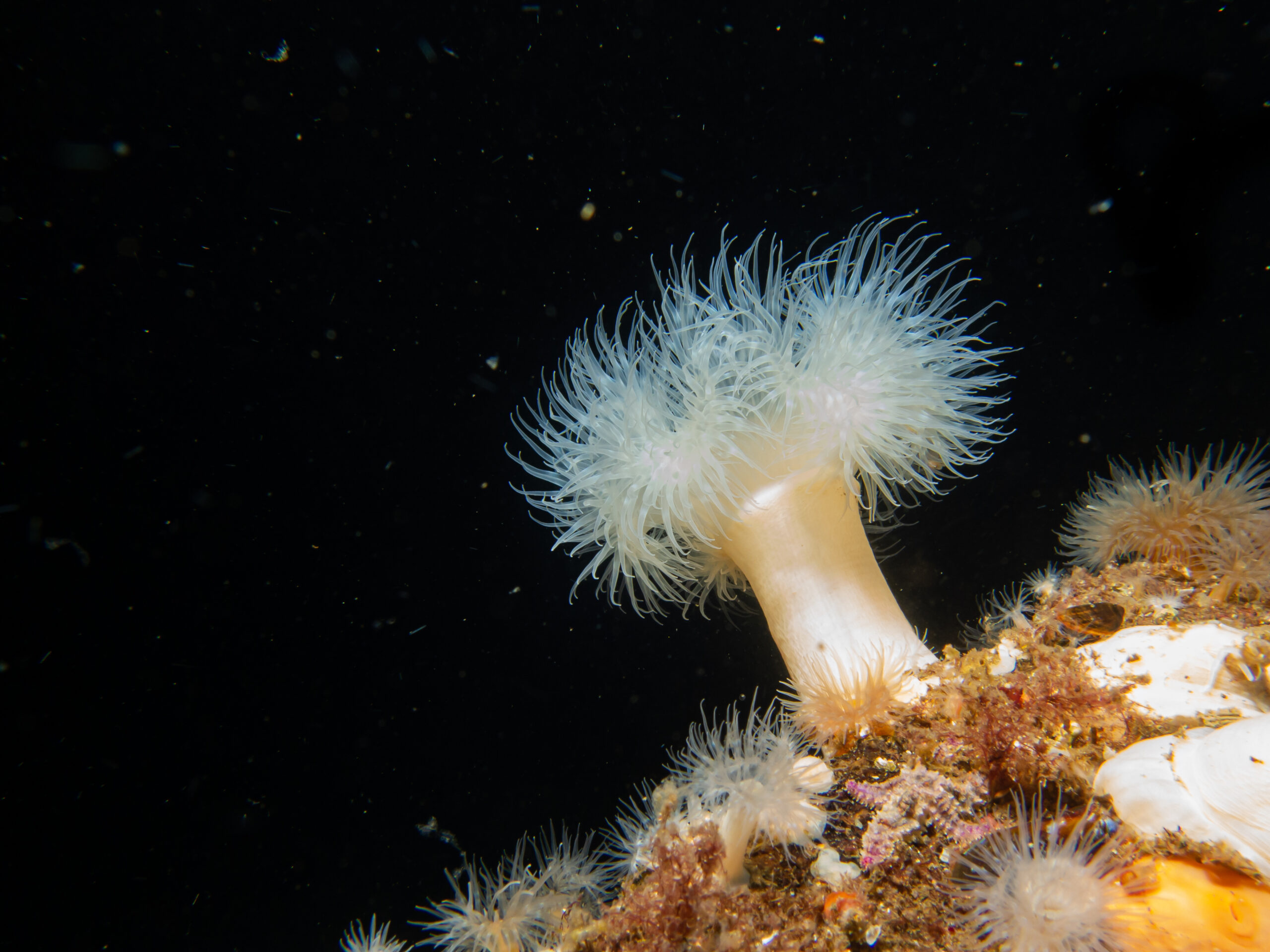
Metridium senile
Habitat
Rocky structures (depths up to 150m)
Diet
Plankton, fish
Lifespan
11-20 years
Location
of origin
New Brunswick Aquarium (Shippagan, NB)
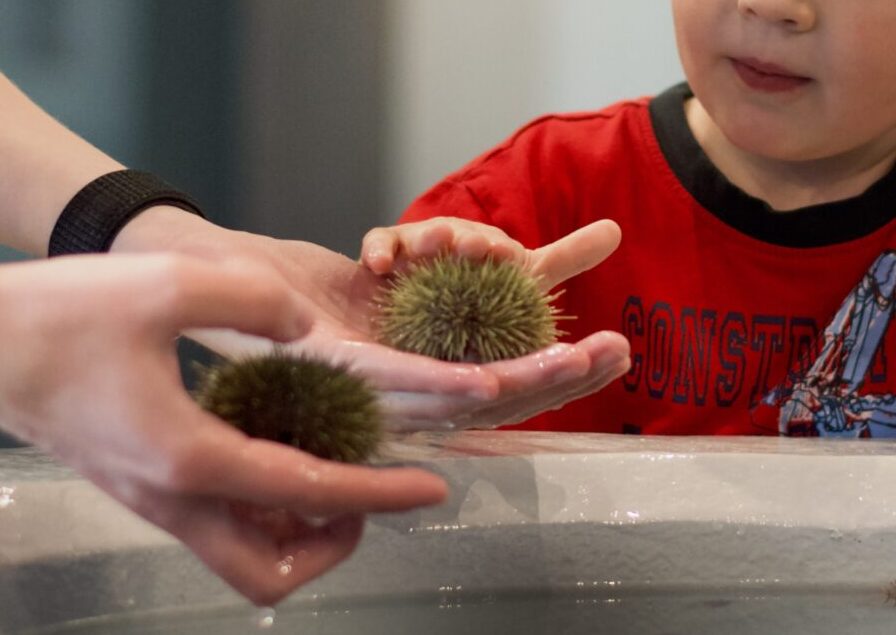
Strongylocentrotus droebachiensis
Habitat
Shallow rocky seafloor
Diet
Algae, kelp
Lifespan
20-25 years
Location
of origin
New Brunswick Aquarium (Shippagan, NB)
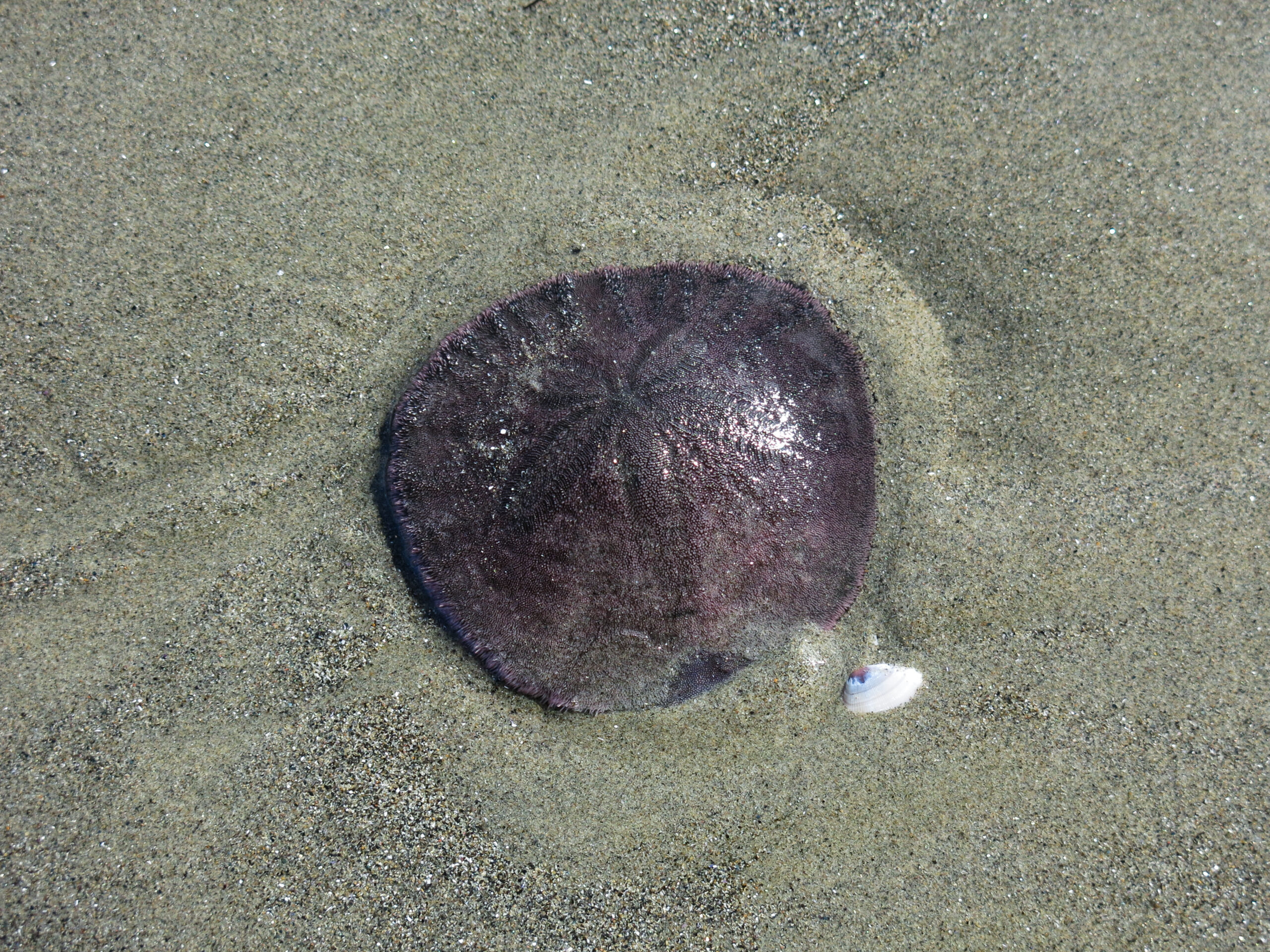
Echinarachnius parma
Habitat
Sandy seafloor
Diet
Crustacean larvae, small copepods, algae
Lifespan
6-10 years
Location
of origin
Northumberland Strait
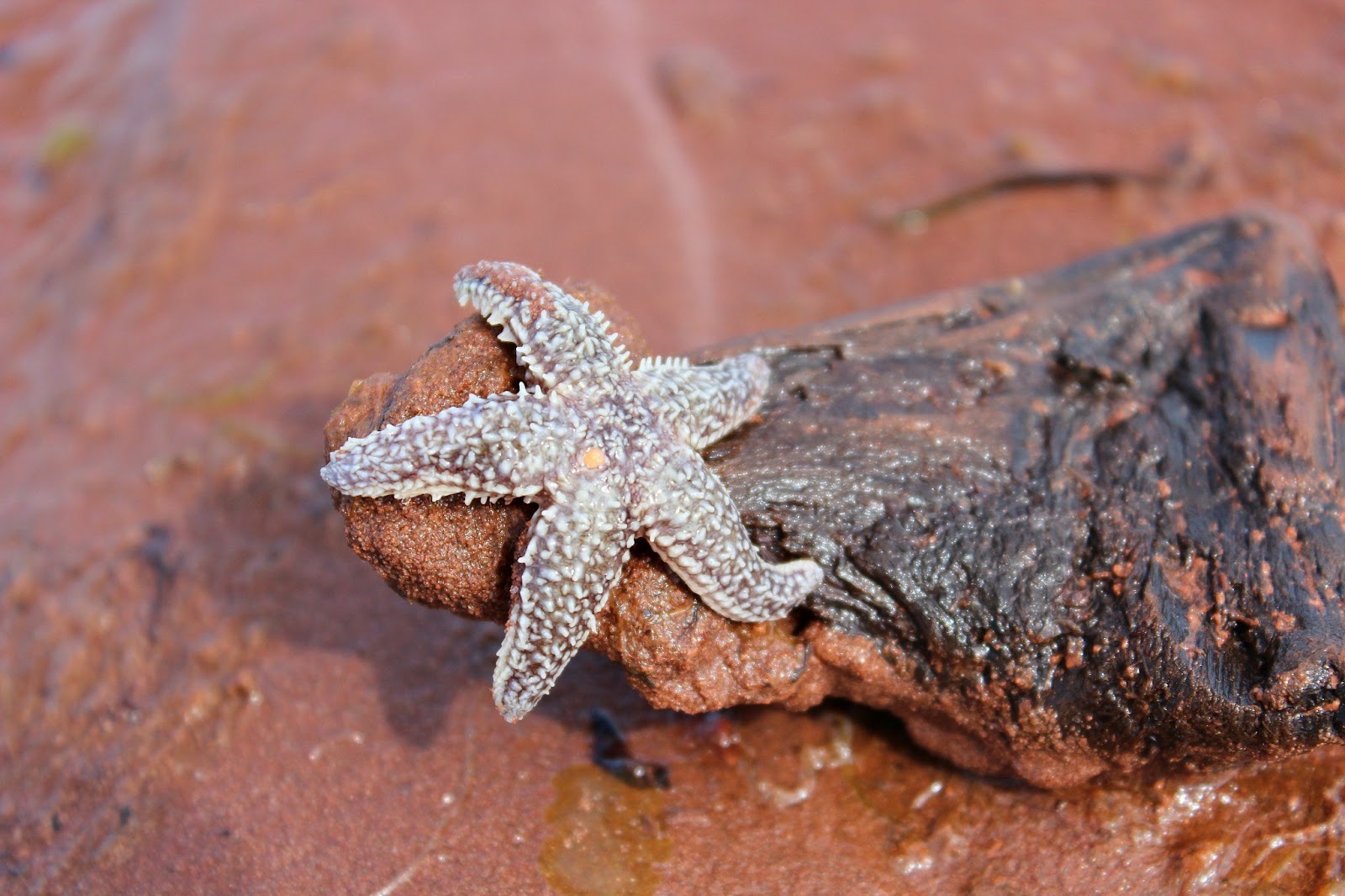
Asterias rubens
Habitat
Gravelly, rocky seafloor in depths from intertidal to 650m.
Diet
Mollusks, small crustaceans, dead fish
Lifespan
7-8 years
Location
of origin
Pointe-du-Chêne, NB
From the striking Striped bass navigating the estuaries to the majestic sharks dominating the open sea, fish showcase an incredible diversity of forms, behaviours, and adaptations. These gilled guardians are not just mere inhabitants of the blue depths; they are crucial in maintaining the balance of marine ecosystems, each species weaving its unique story in the tapestry of ocean life.
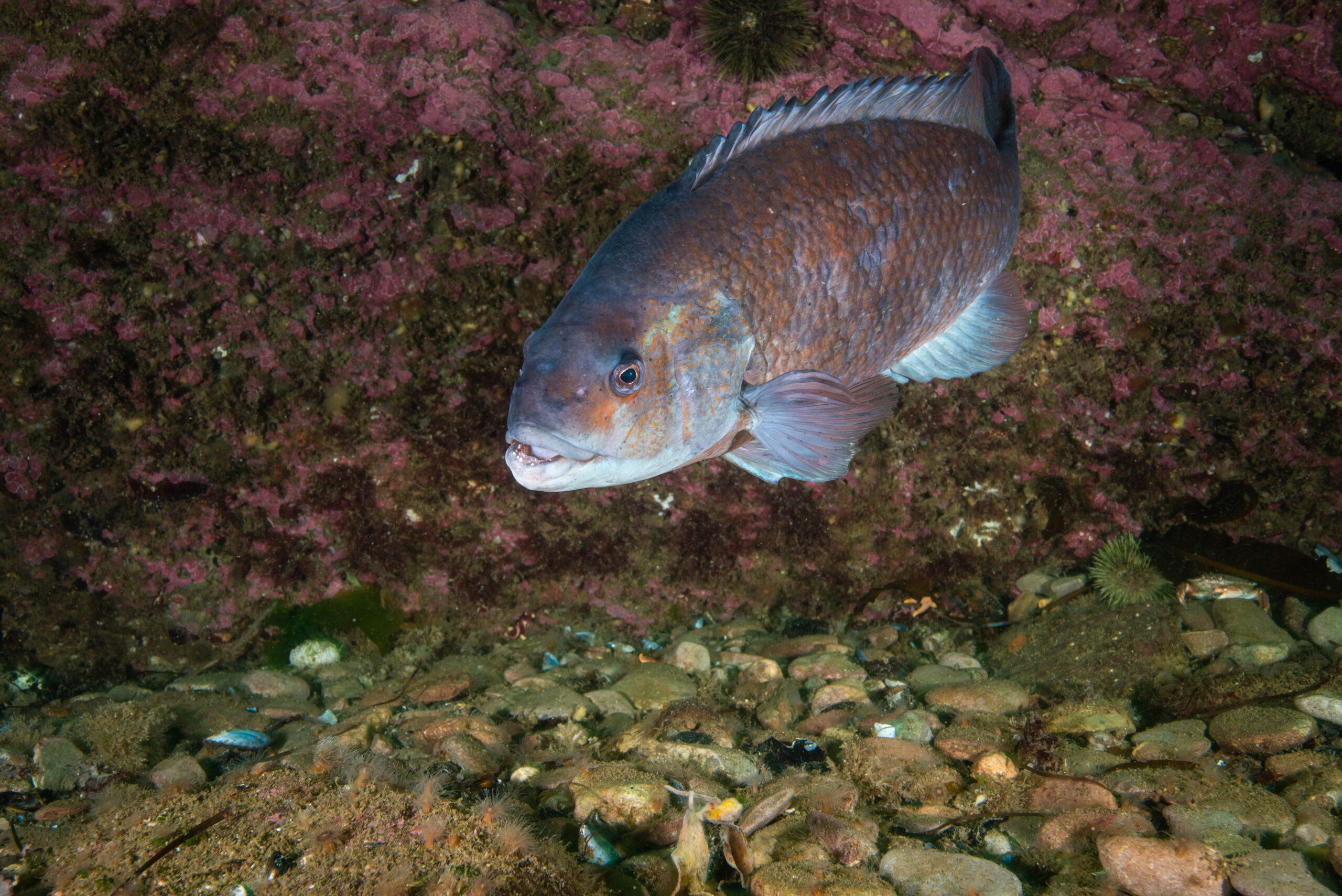
Tautogolabrus adspersus
Habitat
Inshore waters (depths from 10 to 128 m)
Diet
Molluscs, crustaceans, other fish
Lifespan
6 years
Location
of origin
Neguac, NB
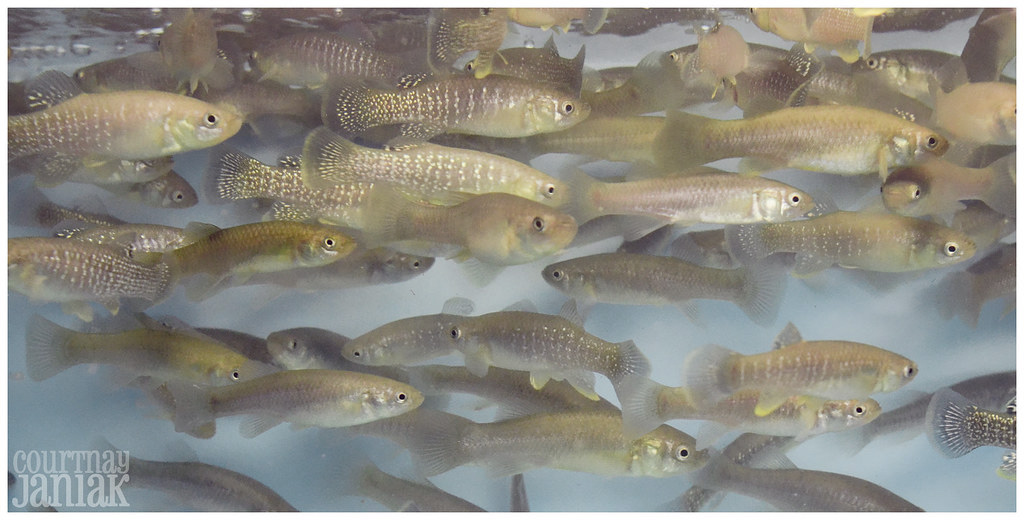
Fundulus heteroclitus
Habitat
Coastal waters
Diet
Plants, crustaceans, mollusks, fish eggs, small fish
Lifespan
4 years
Location
of origin
Richibucto, NB
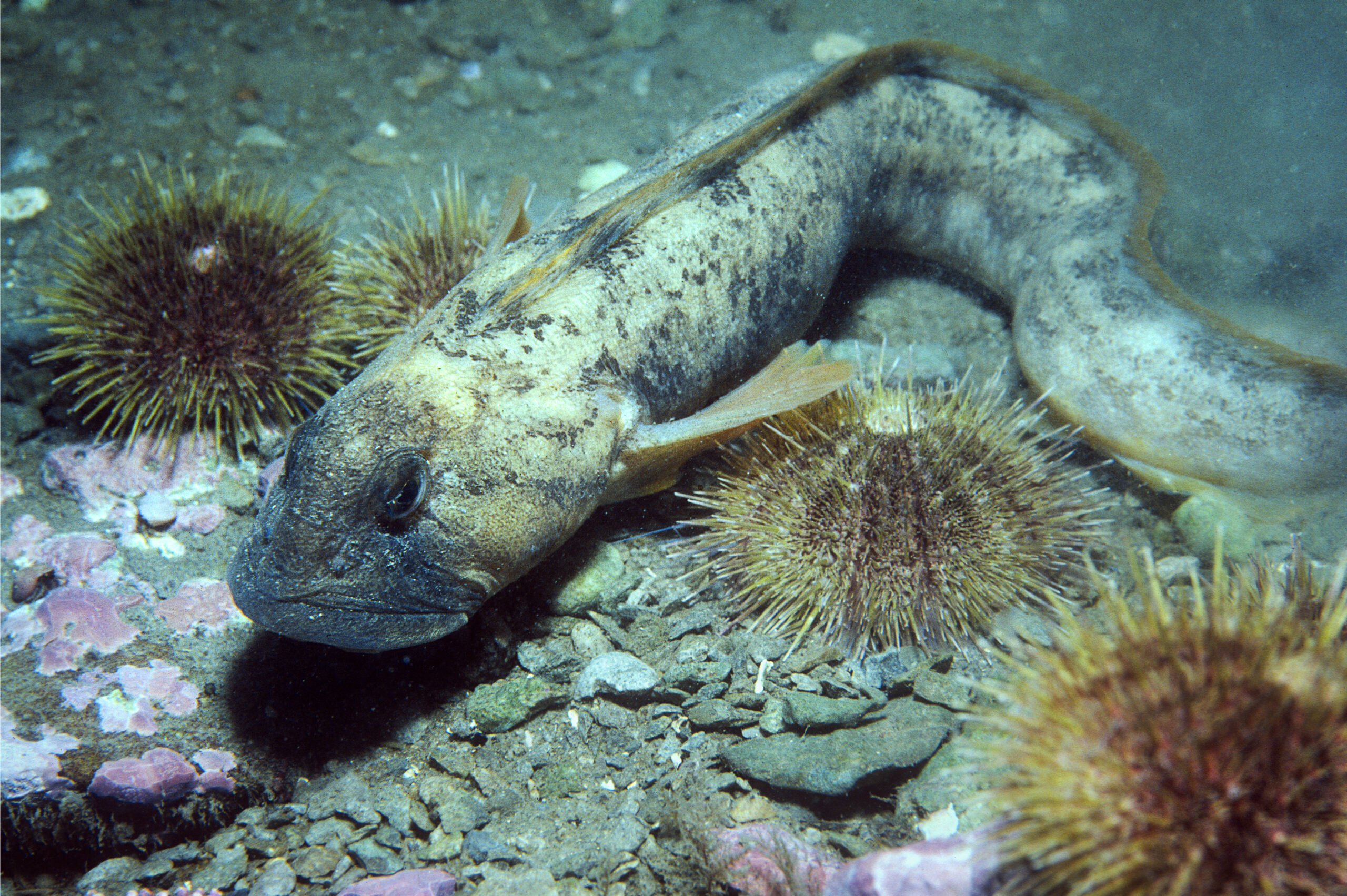
Macrozoarces americanus
Habitat
Sandy, muddy, or rocky seafloor (depths from 10 to 210 m)
Diet
Mollusks, echinoderms, crustaceans, fish
Lifespan
Unknown
Location
of origin
Neguac, NB
Pholis gunnellus
Habitat
Rocky seafloor from intertidal to depths of 100m
Diet
Small crustaceans, polychaetes, mollusks, and fish eggs
Lifespan
5 years
Location
of origin
Murray Corner, NB

Hemitripterus americanus
Habitat
Rocky seafloor
Diet
Mollusks, crustaceans, and fish
Lifespan
9 to 15 years
Location
of origin
Neguac, NB
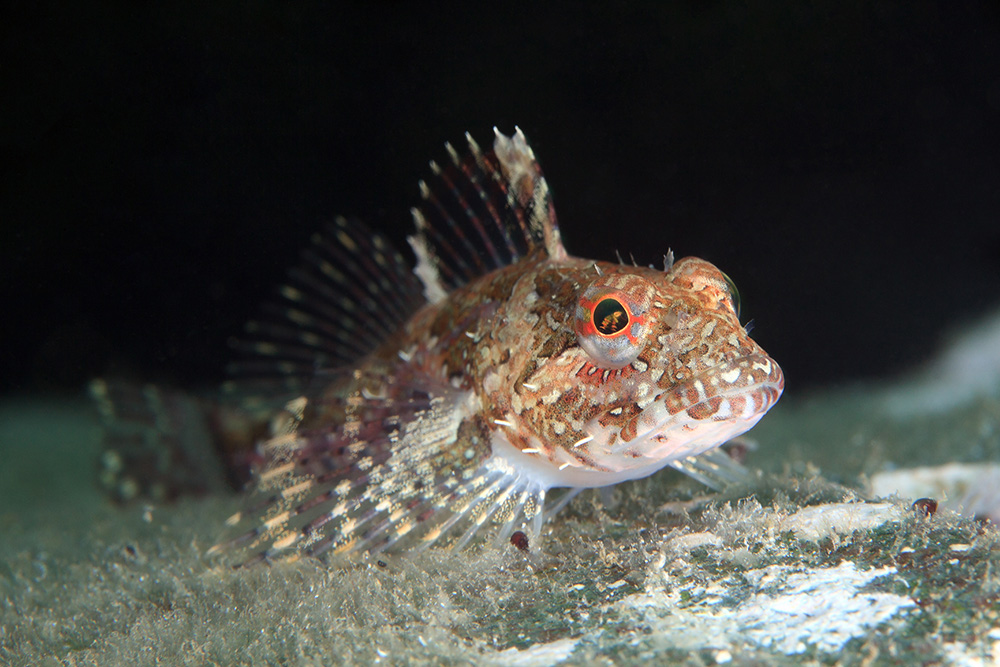
Myoxocephalus scorpius
Habitat
Gravelly or sandy seafloor
Diet
Mollusks, crustaceans, small fish
Lifespan
9 to 15 years
Location
of origin
Neguac, NB & Val-Comeau, NB
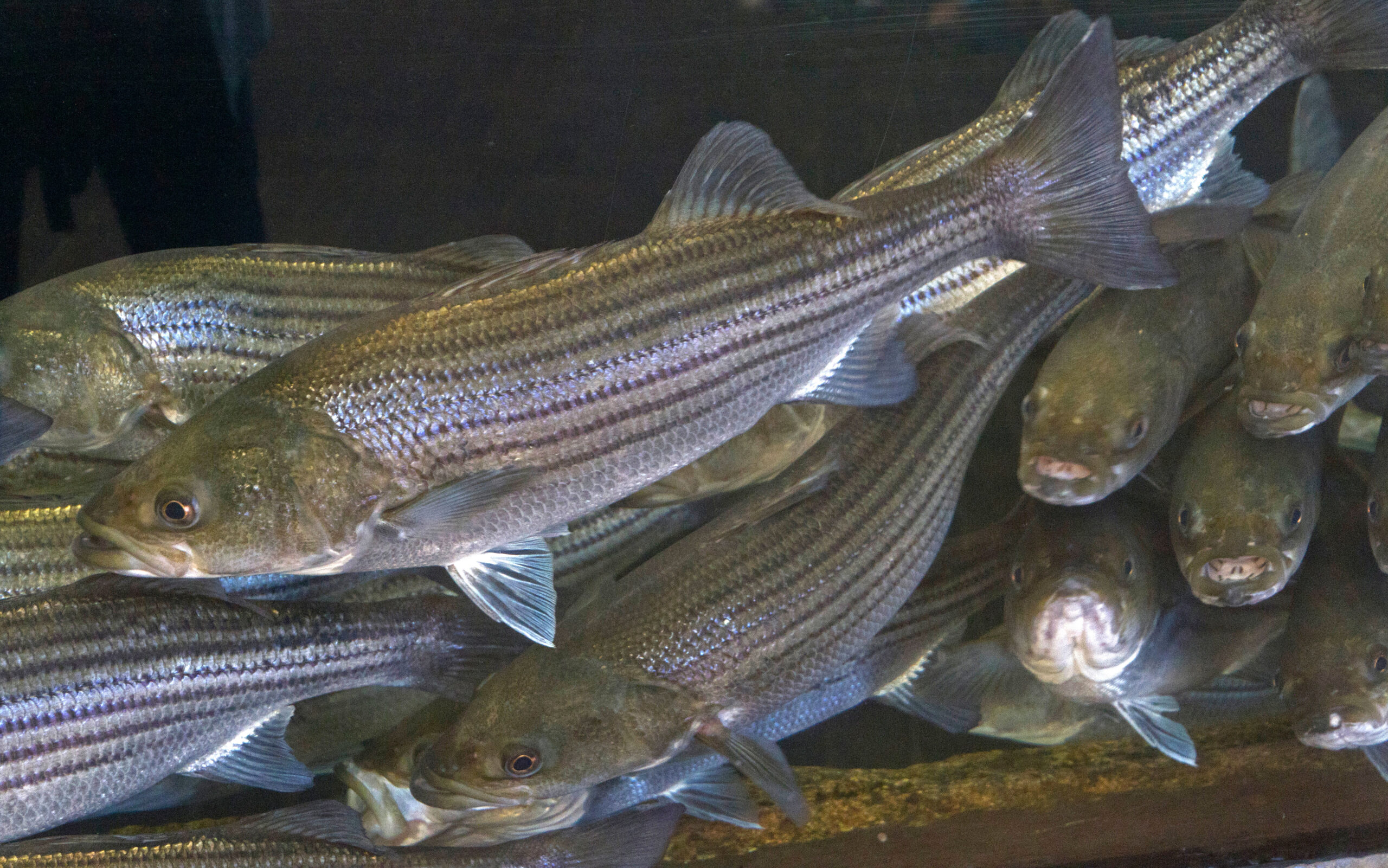
Roccus saxatilis
Habitat
Inshore waters
Diet
Fish, crabs, squid
Lifespan
30 years
Location
of origin
Shediac, NB
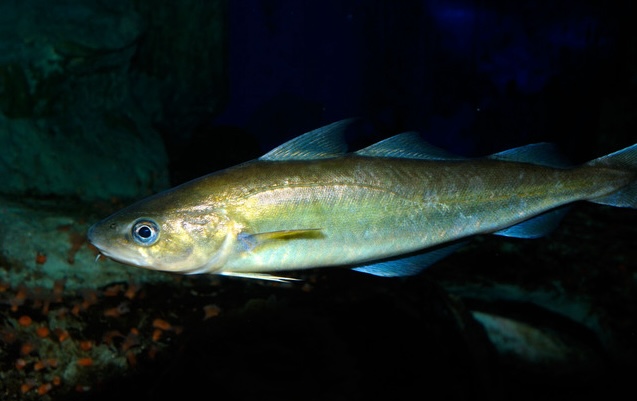
Microgadus tomcod
Habitat
Mouths of streams or estuaries
Diet
Crustaceans, small mollusks, and small fish
Lifespan
4 years
Location
of origin
Cap-Pelé, NB
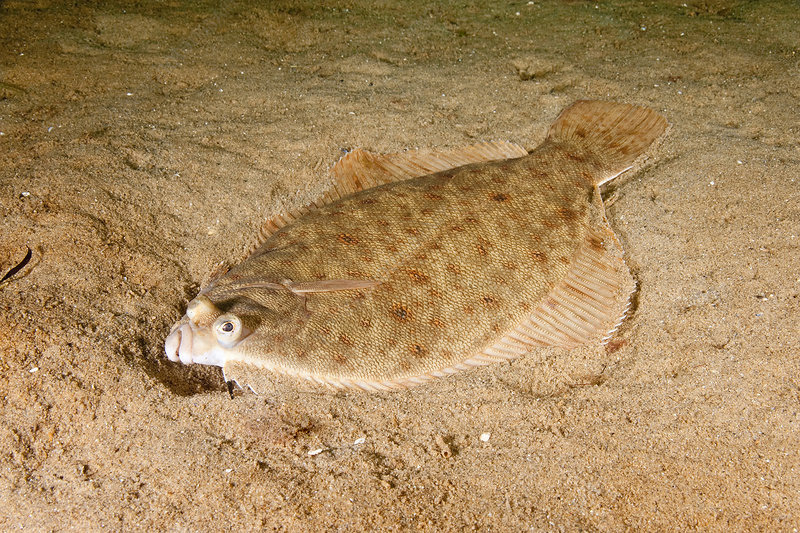
Pseudopleuronectes americanus
Habitat
Muddy or sandy seafloor
Diet
Small invertebrates, shrimp, mollusks, fish
Lifespan
15 to 18 years
Location
of origin
New Brunswick Aquarium (Shippagan, NB)
Plunge into unlimited depths of discovery with our Season Pass, your all-access ticket to a year filled with aquatic adventure and education. Dive deeper into the world of marine